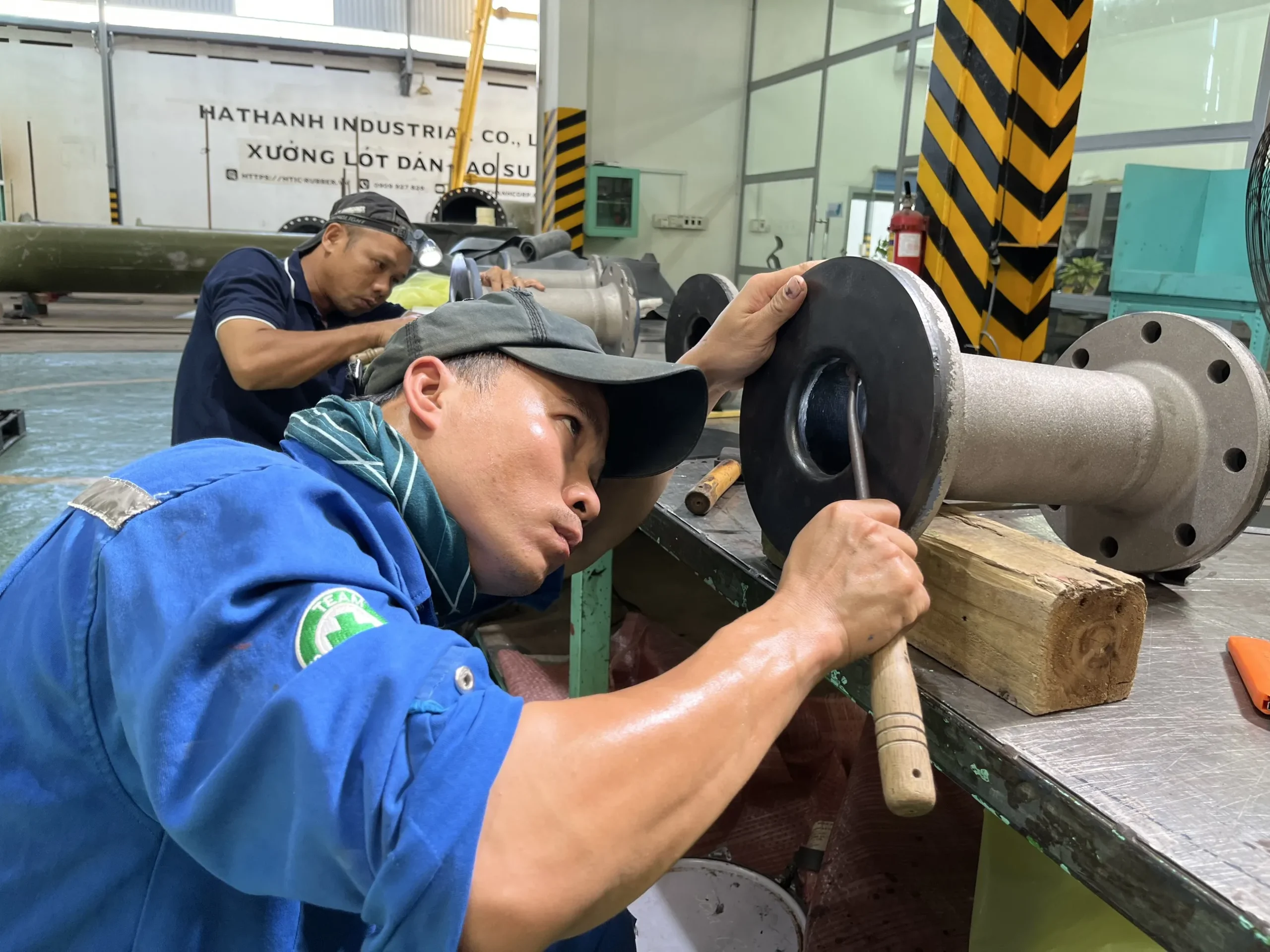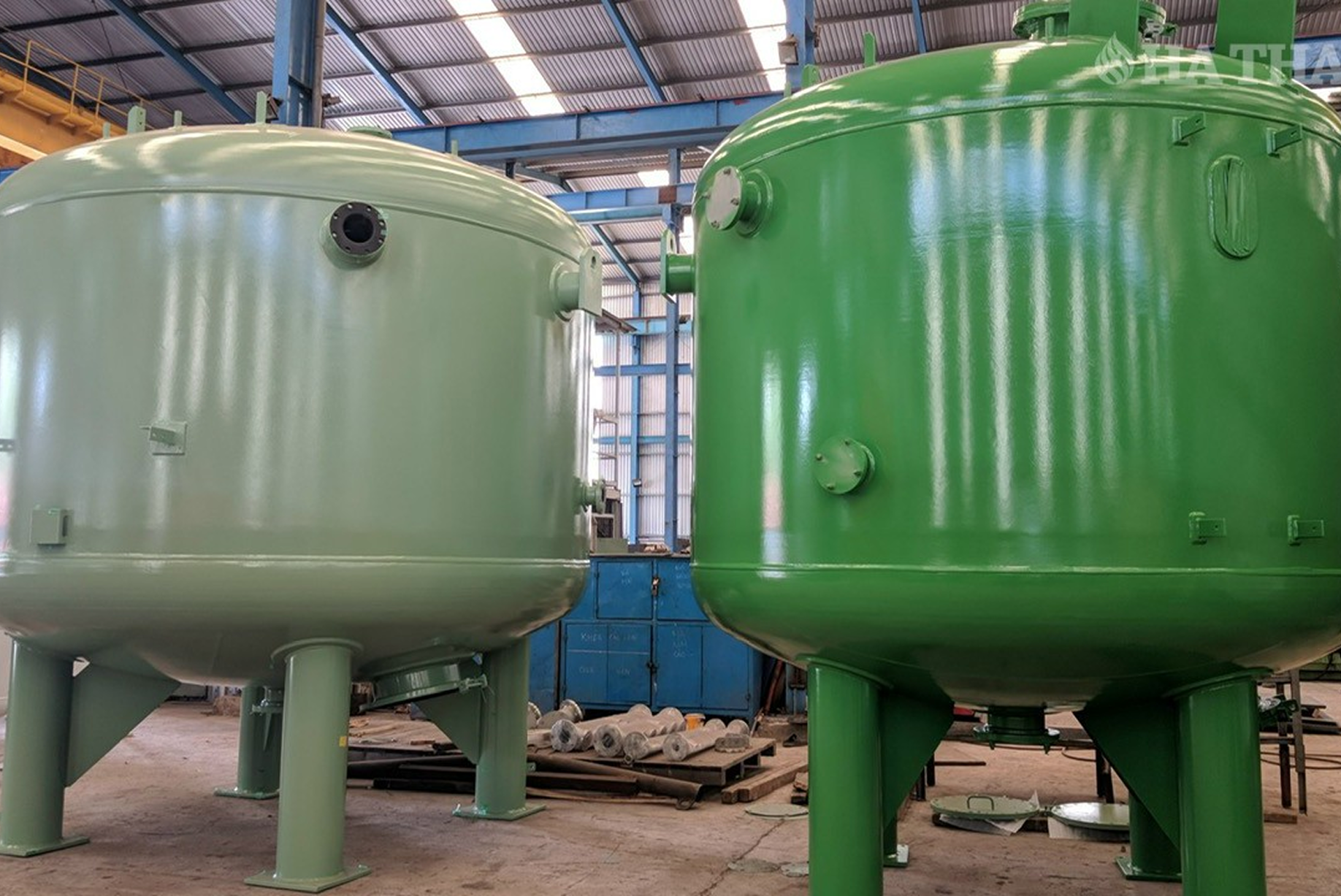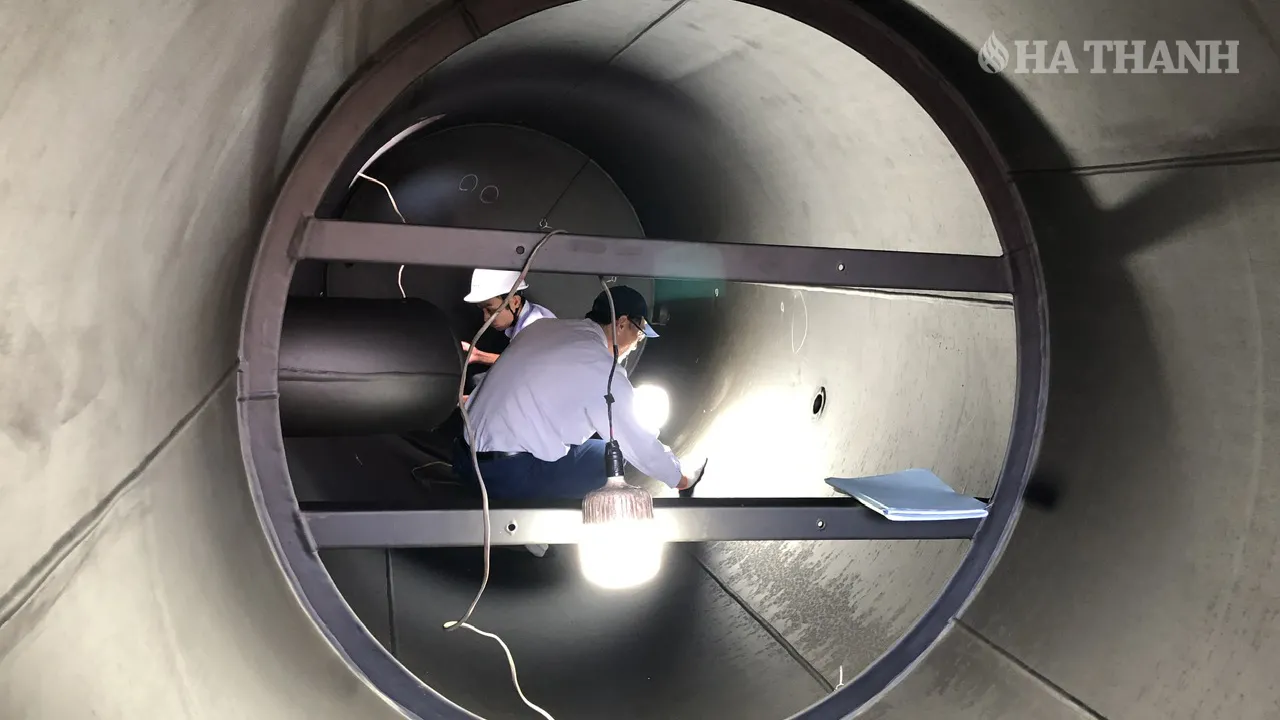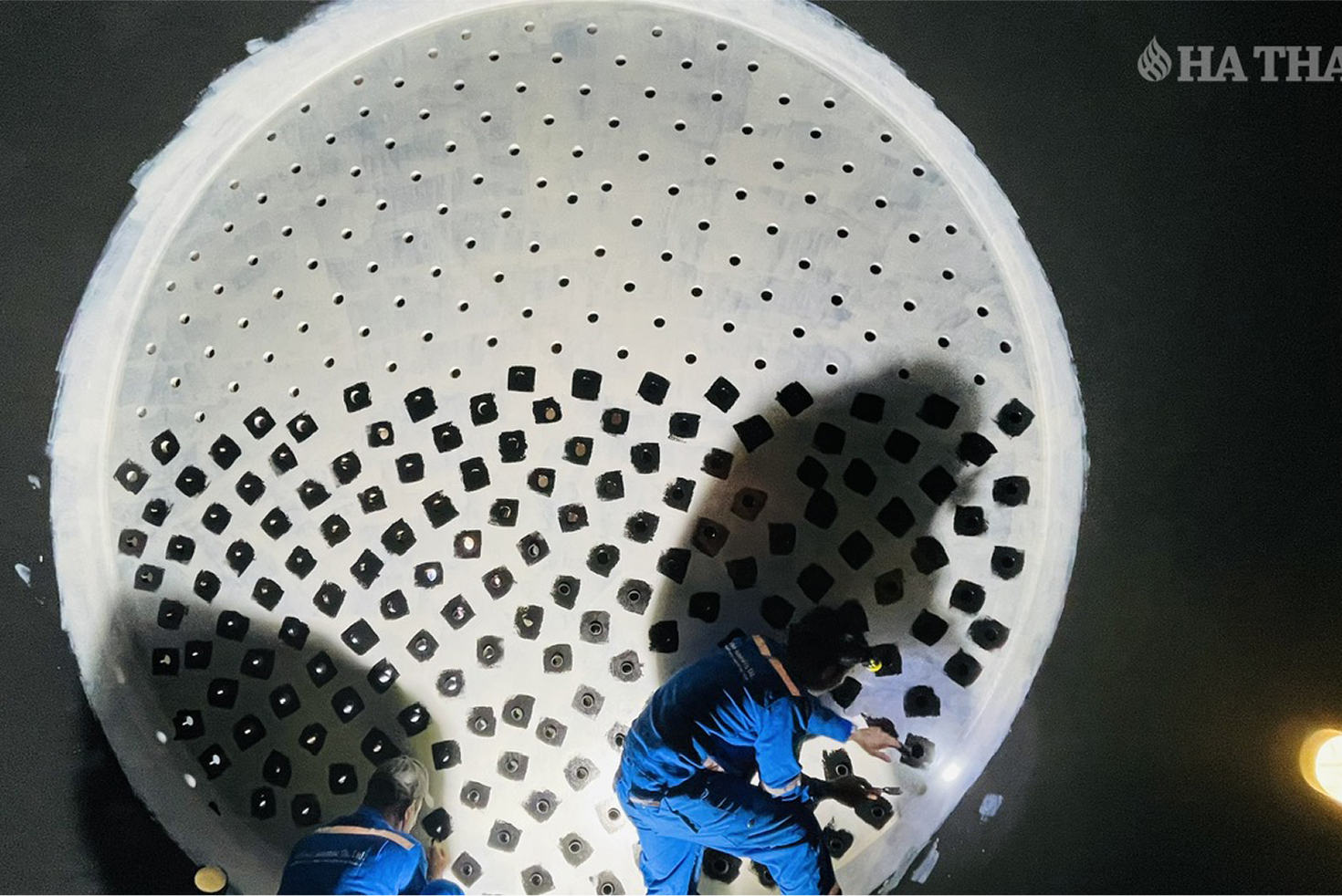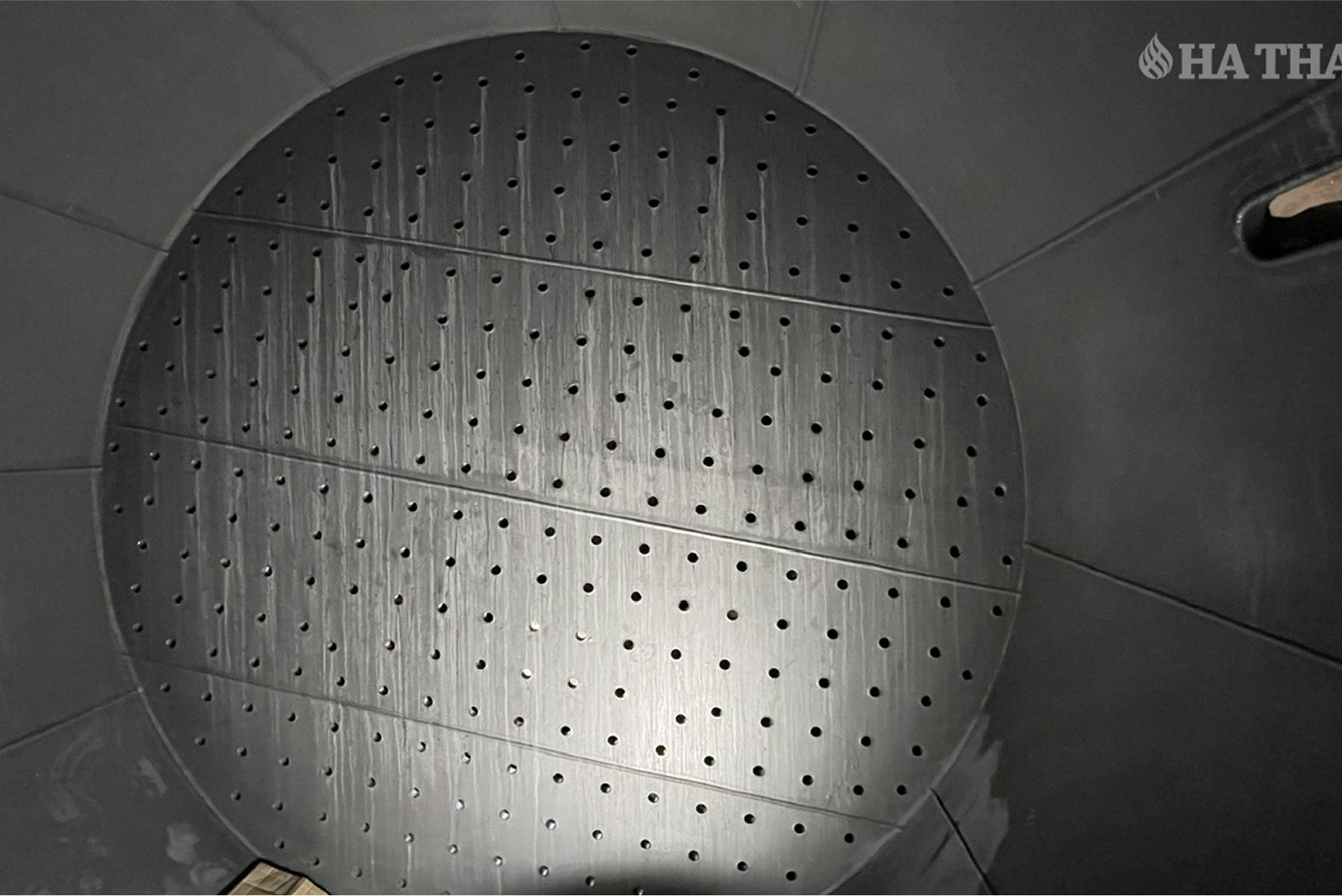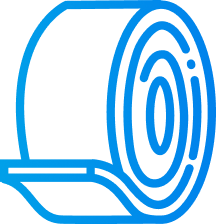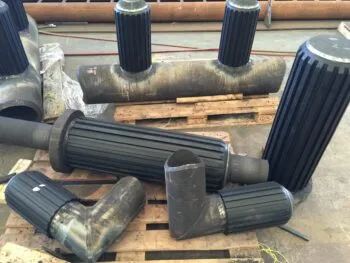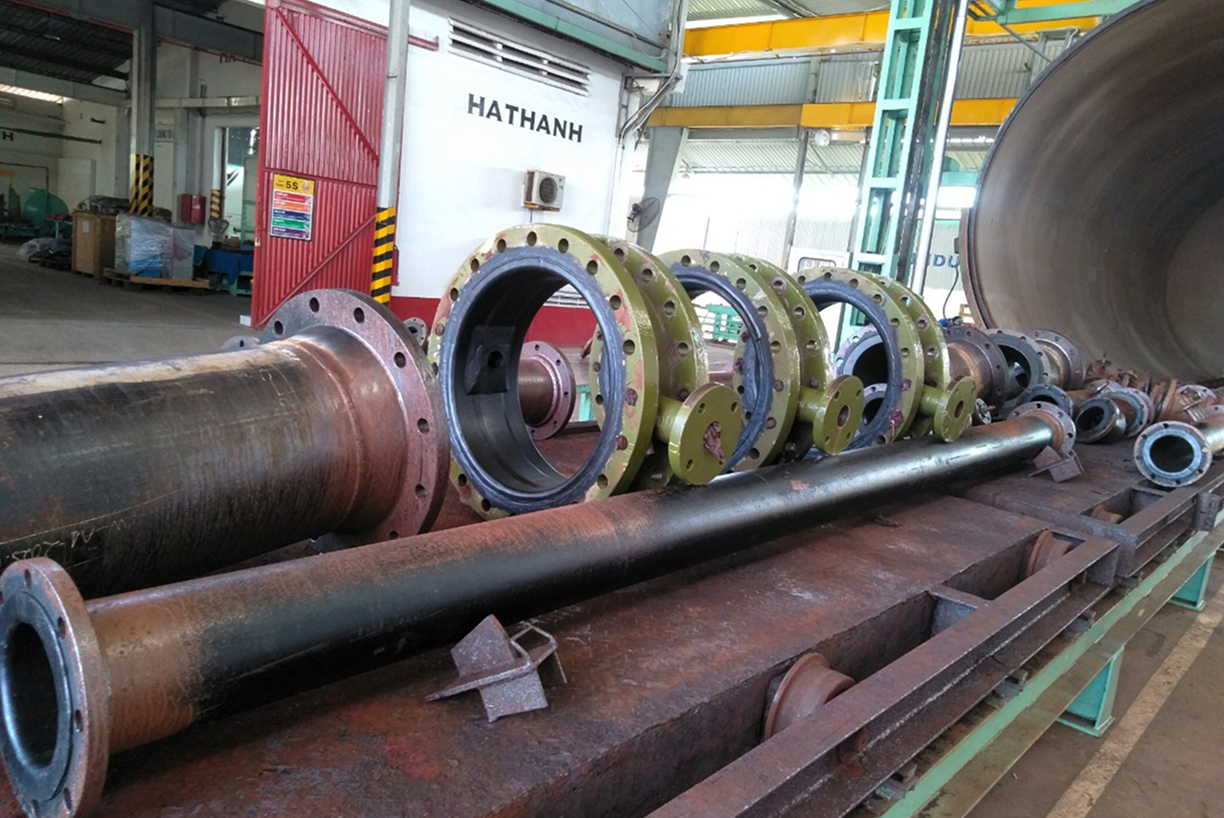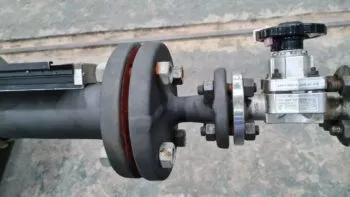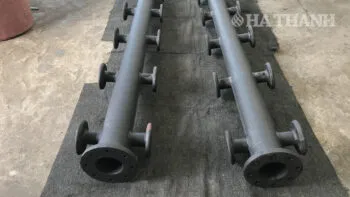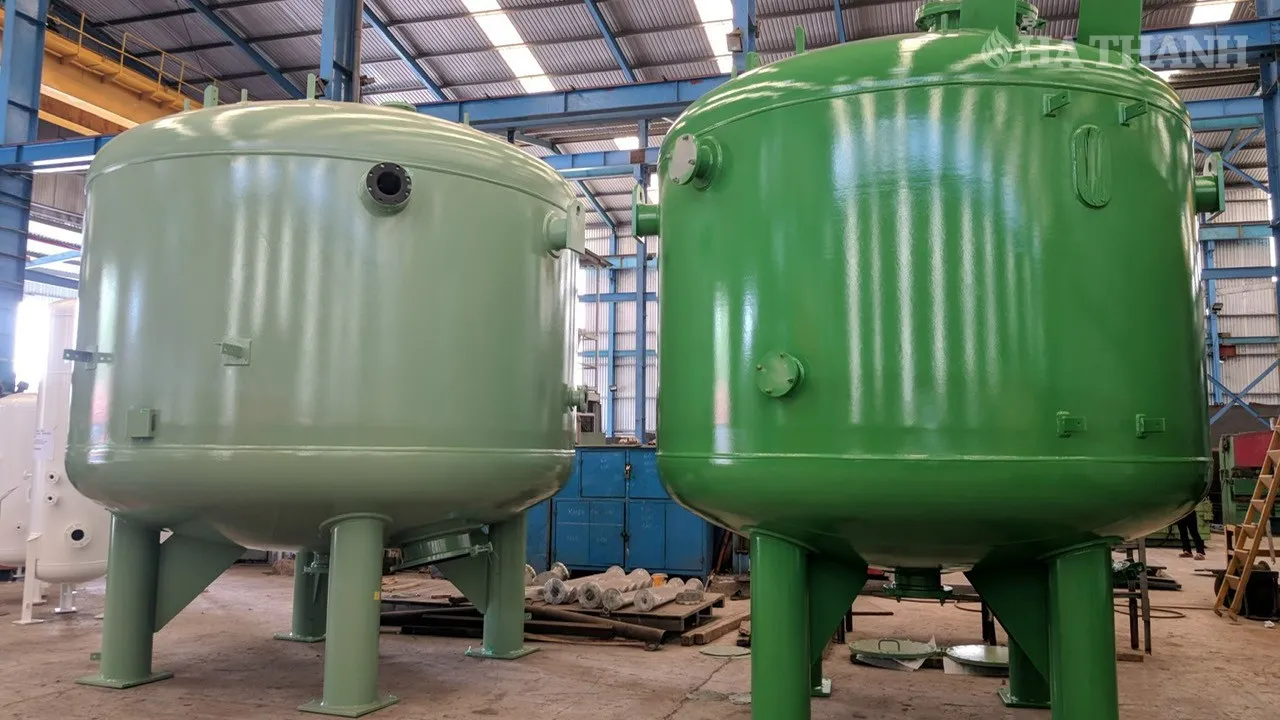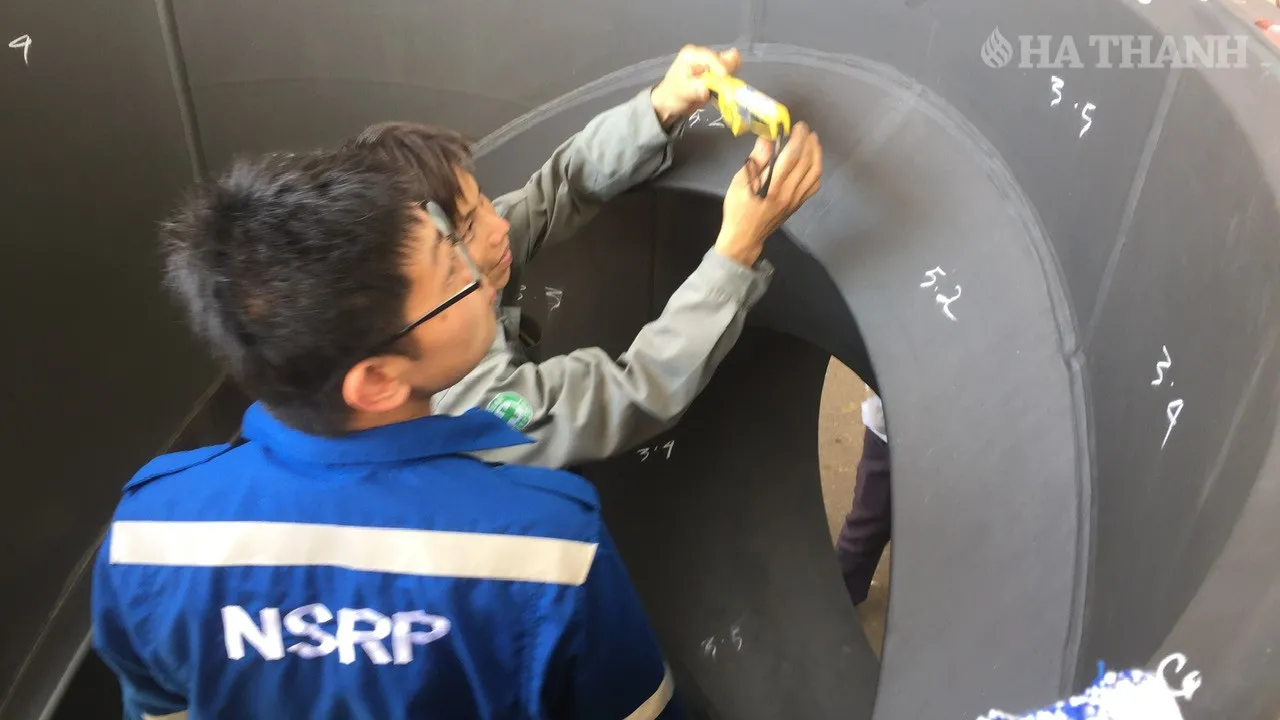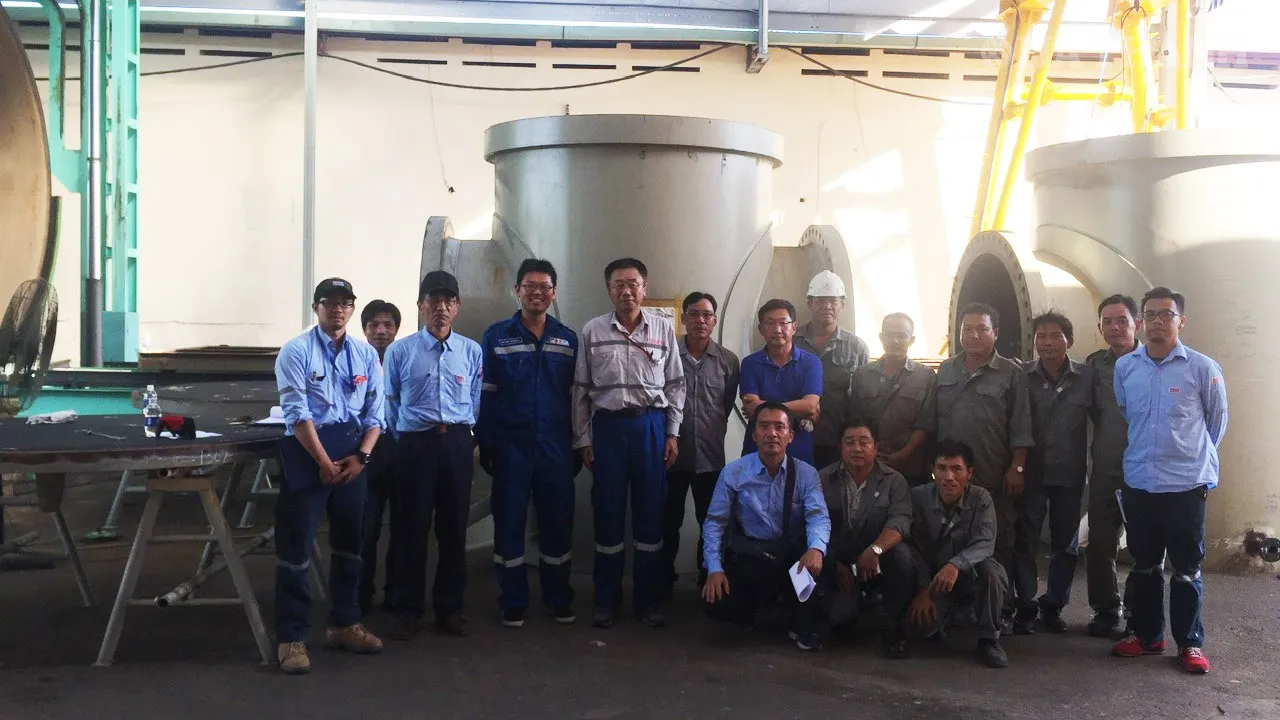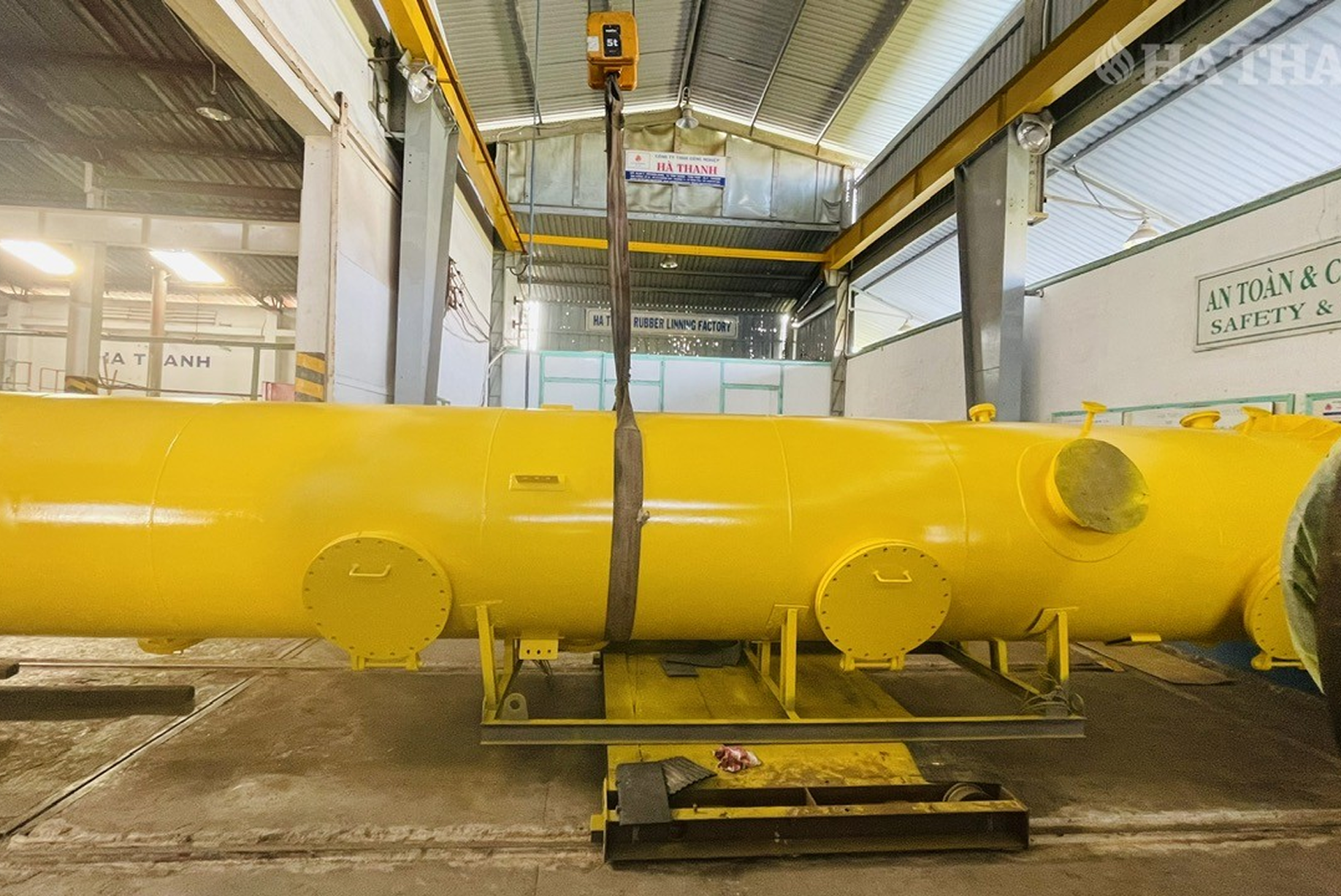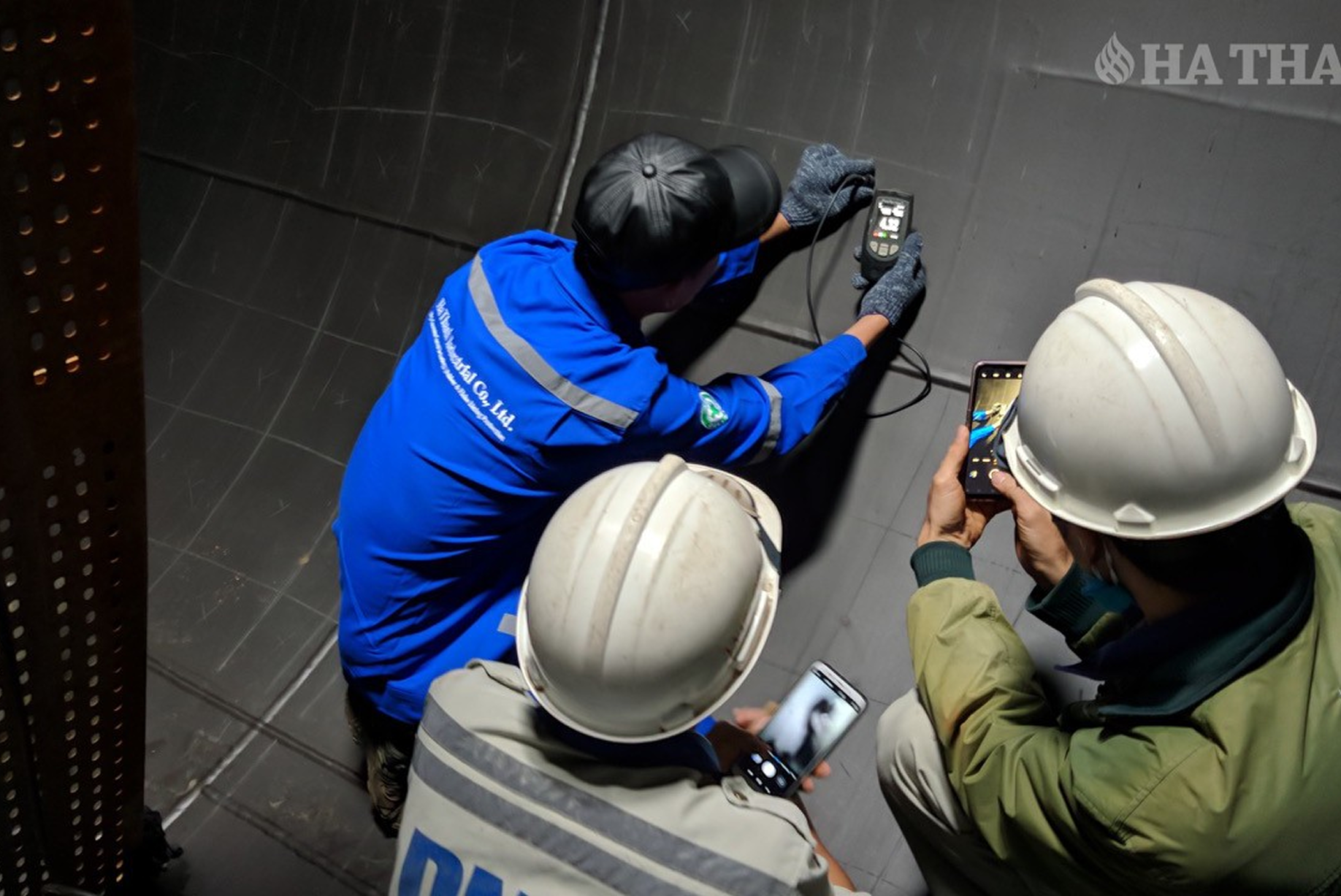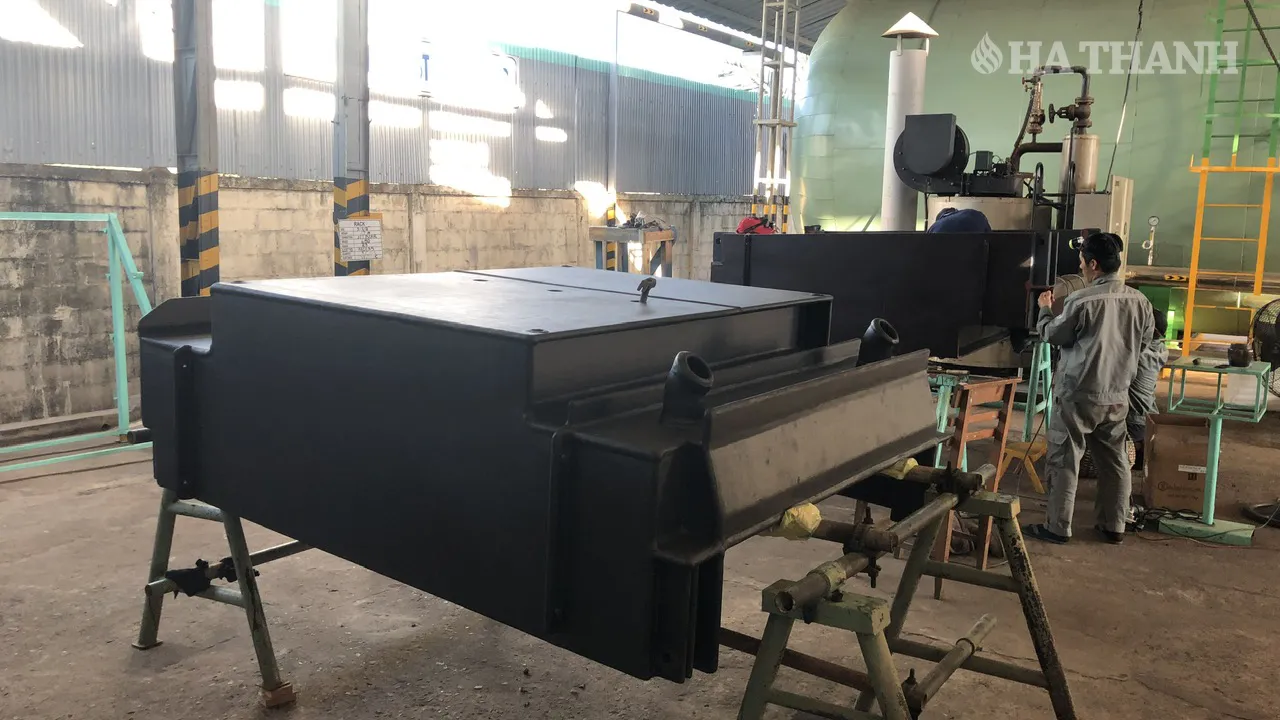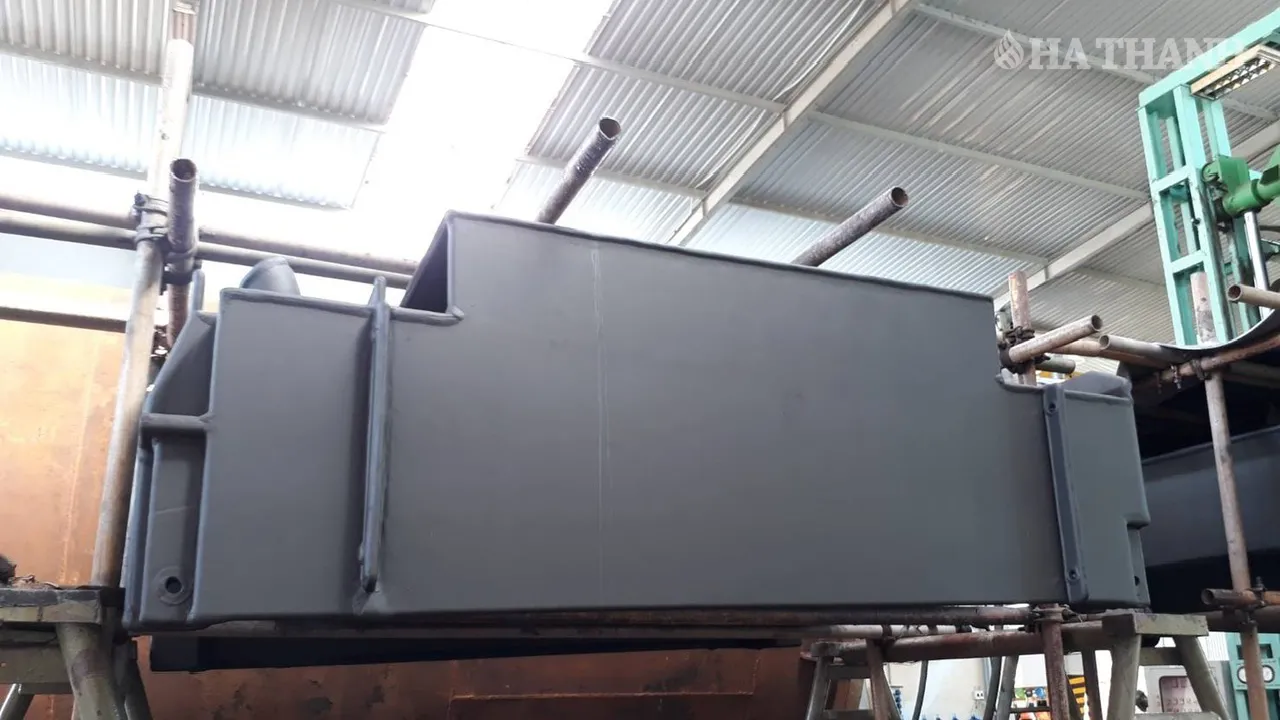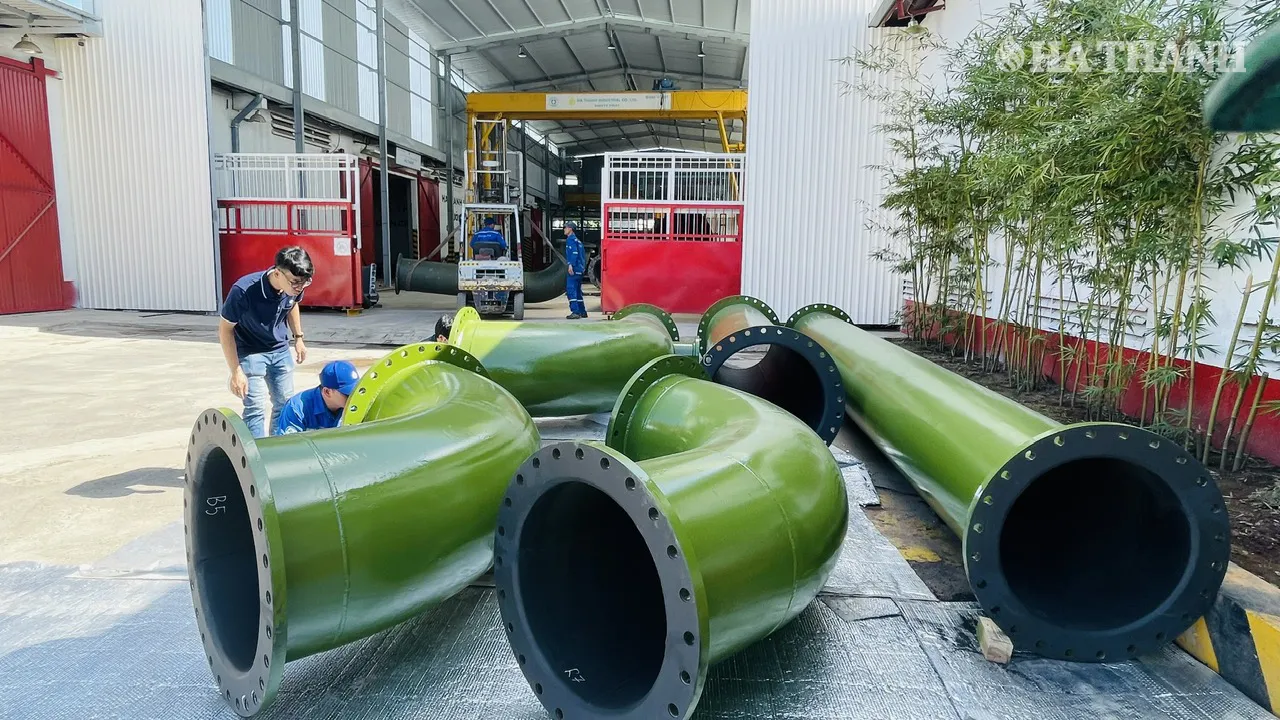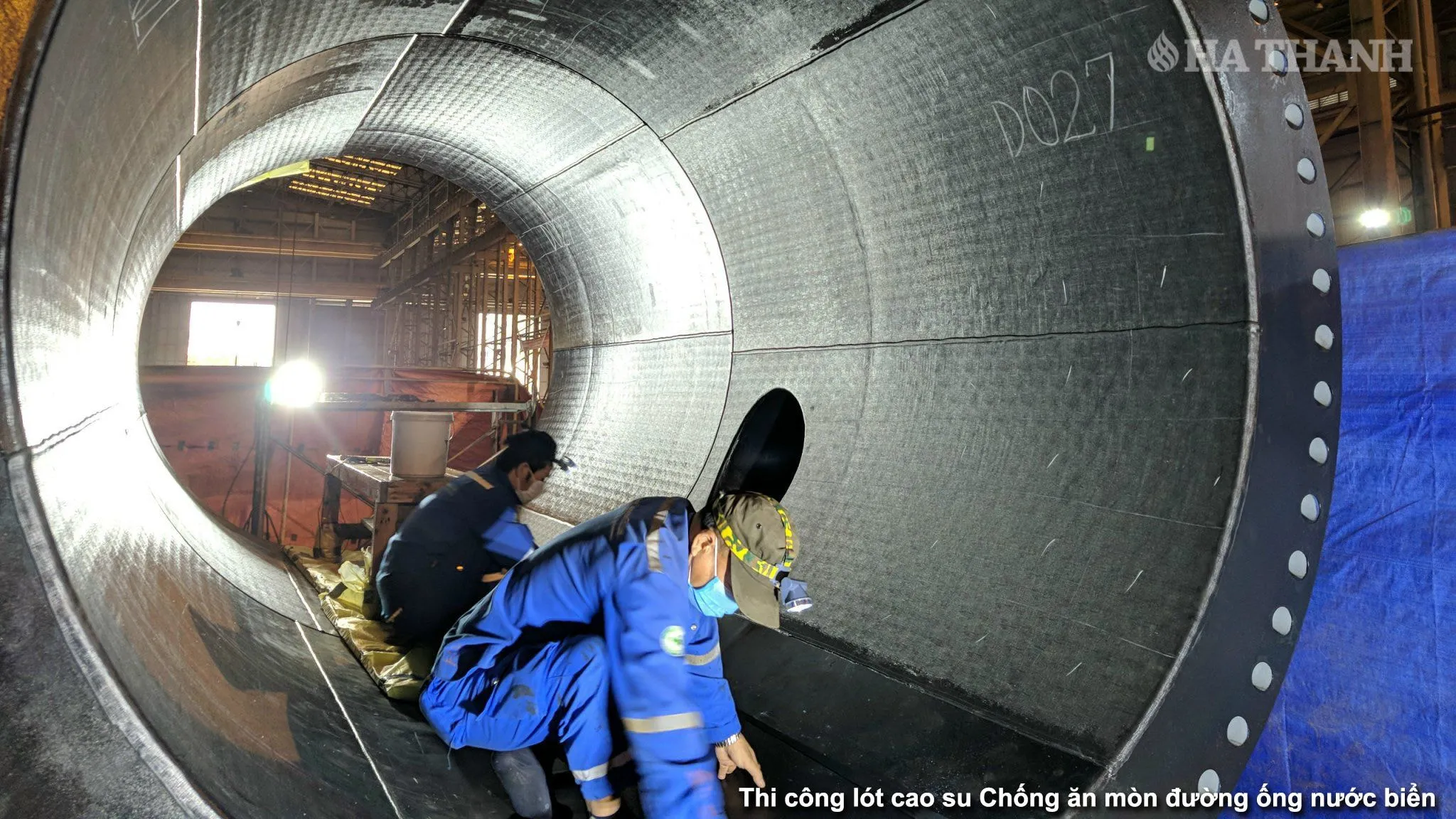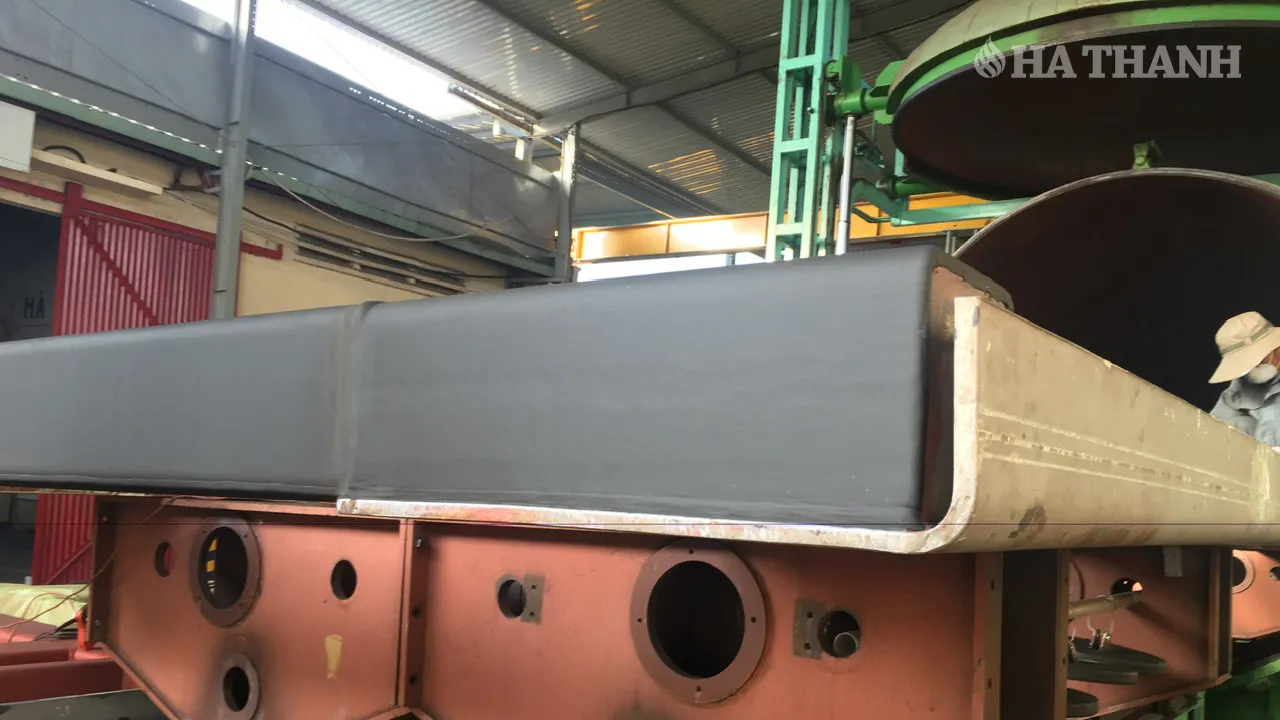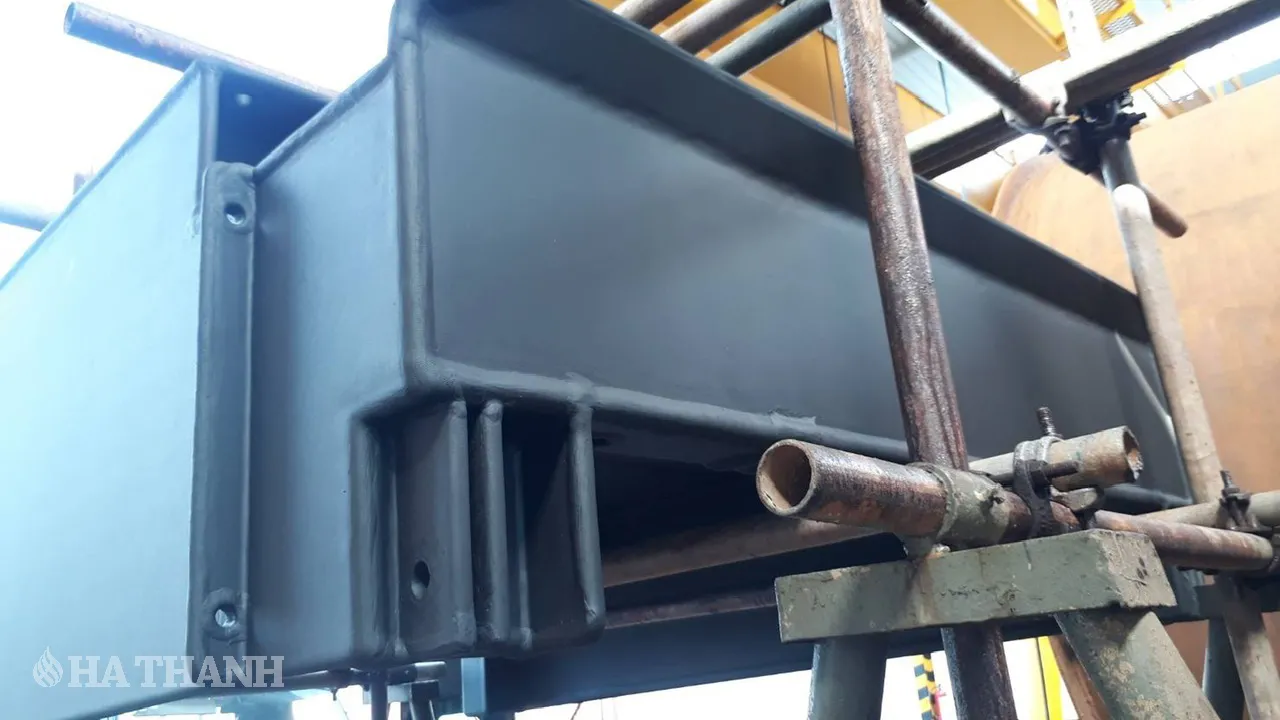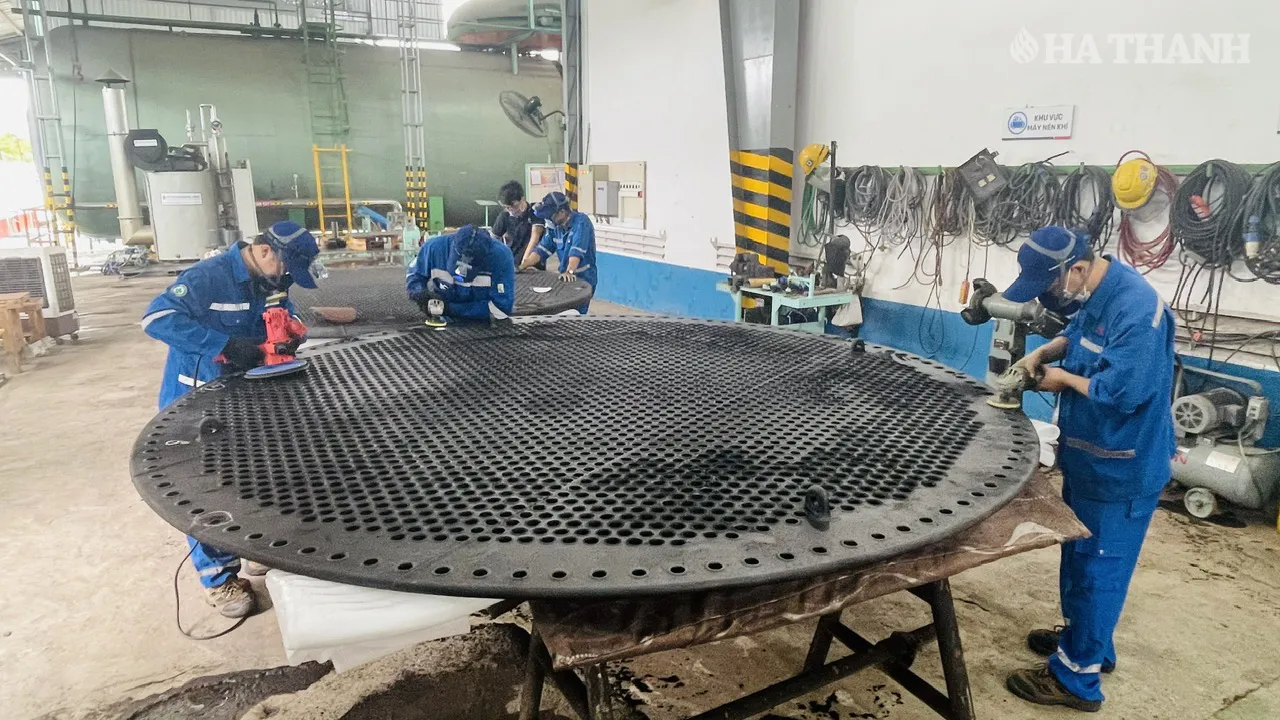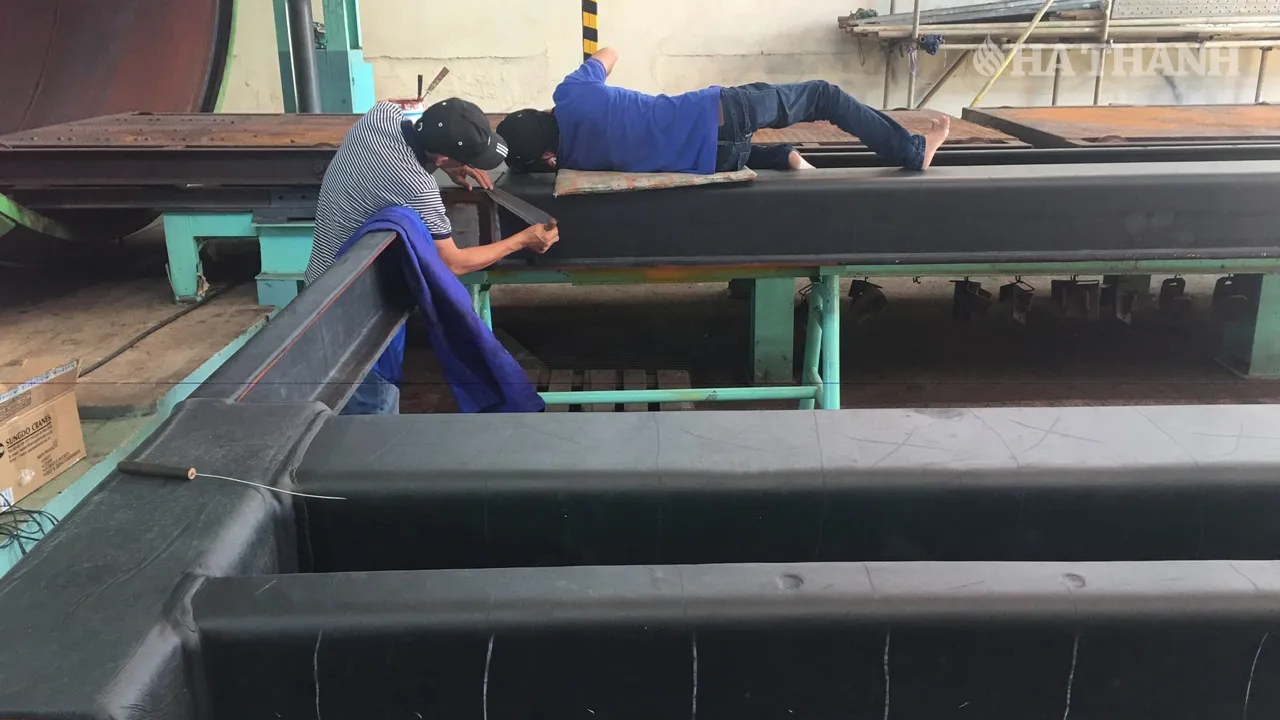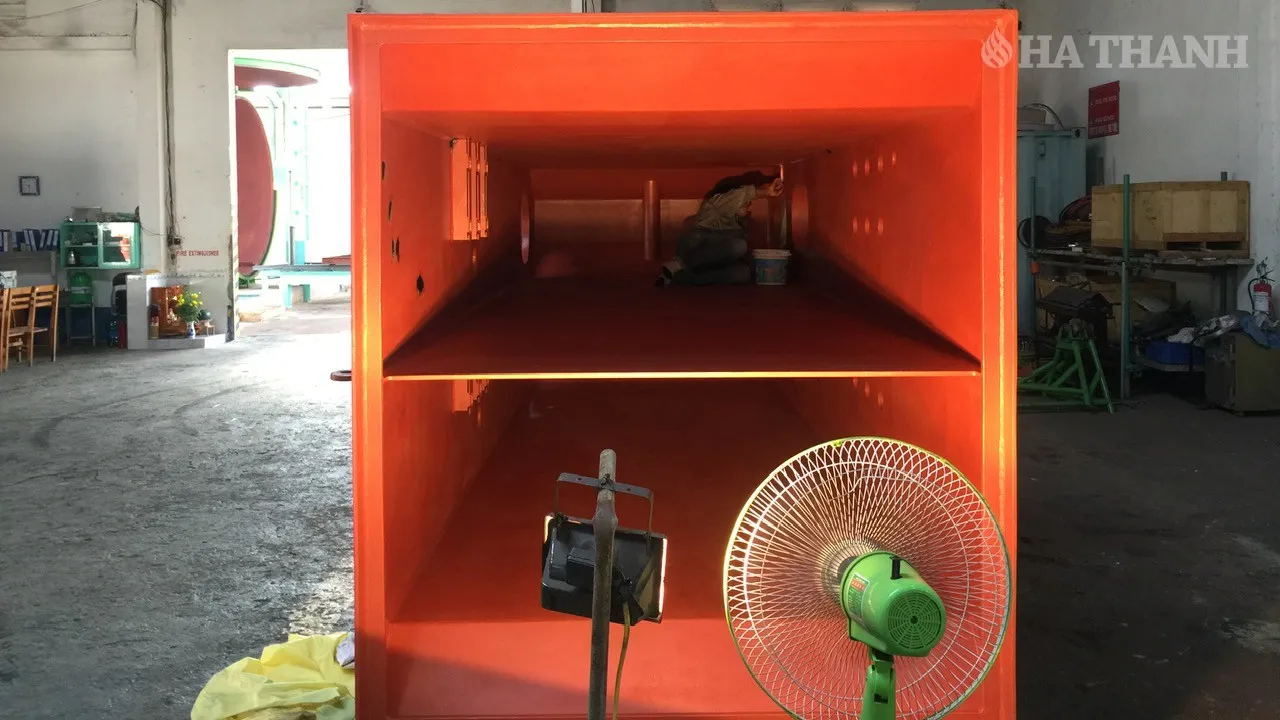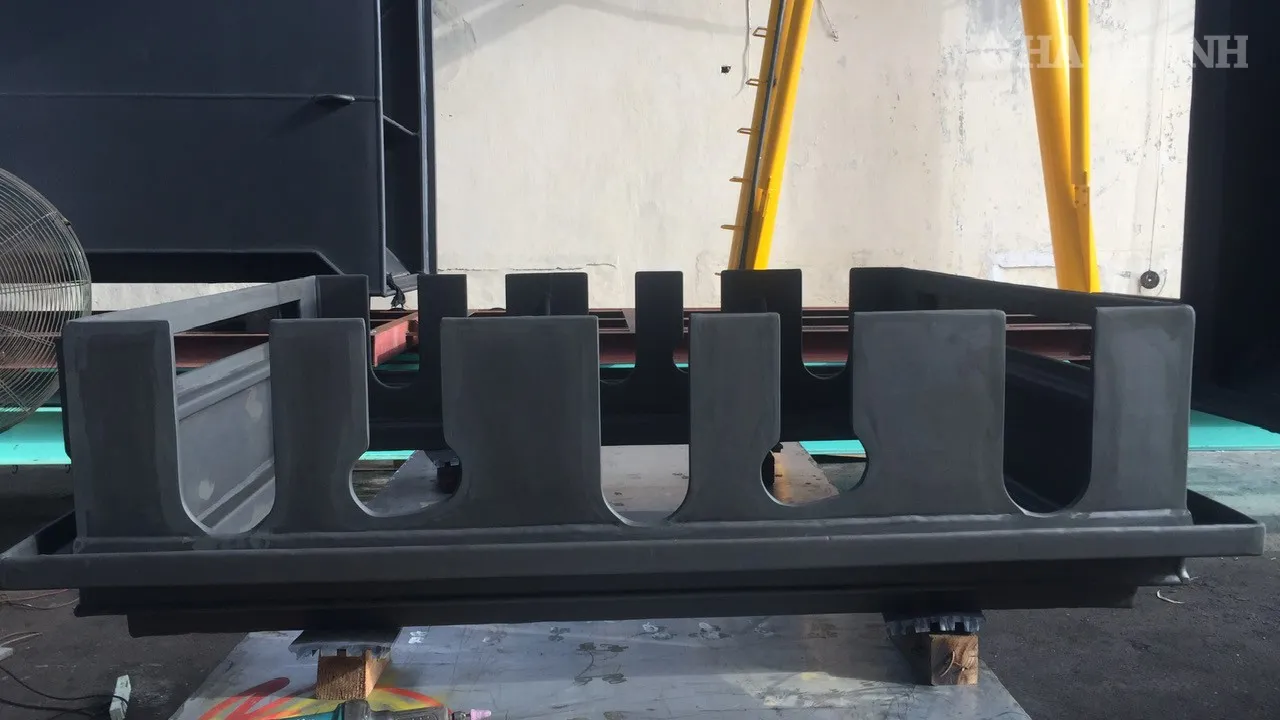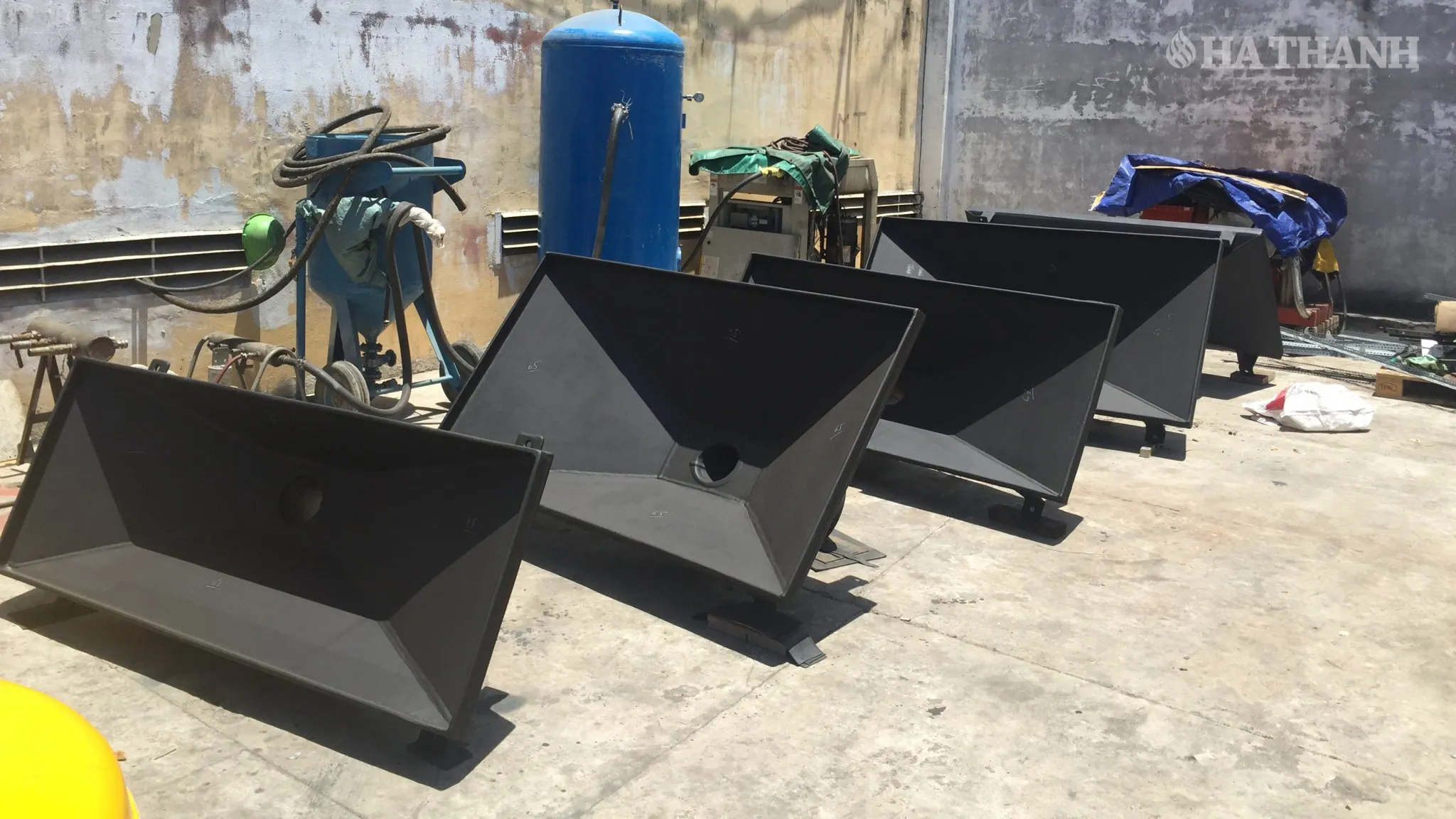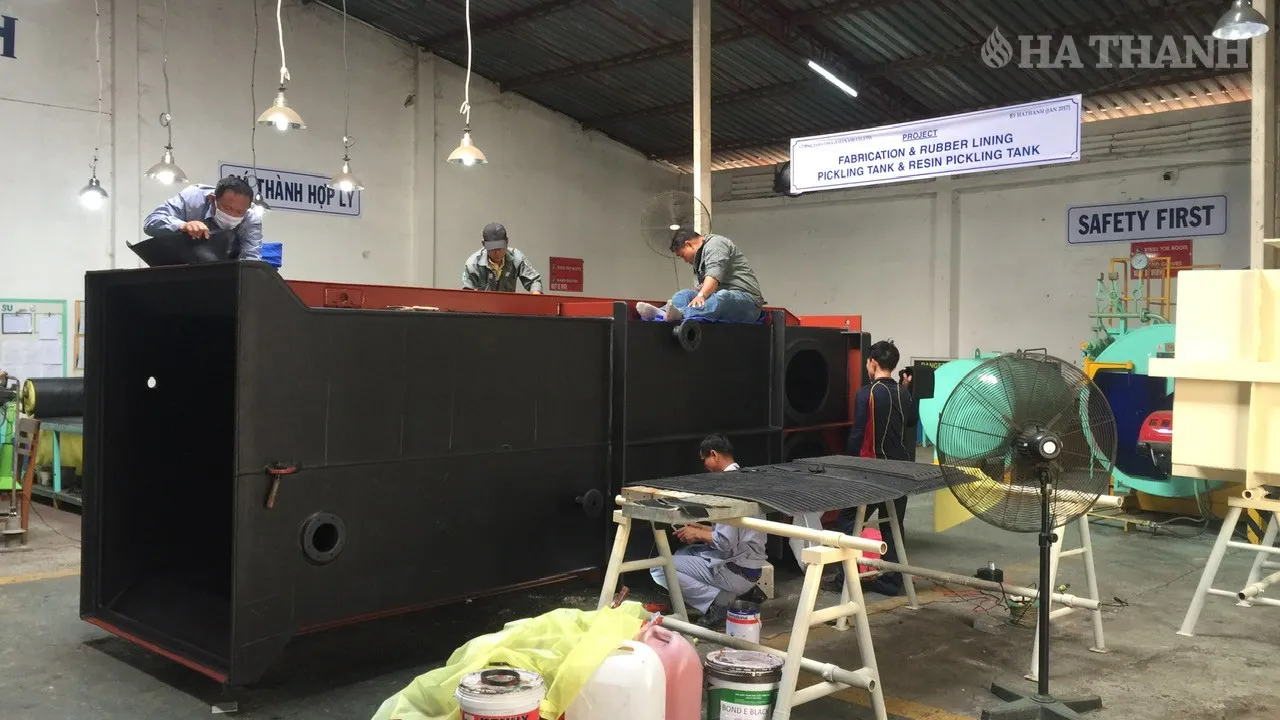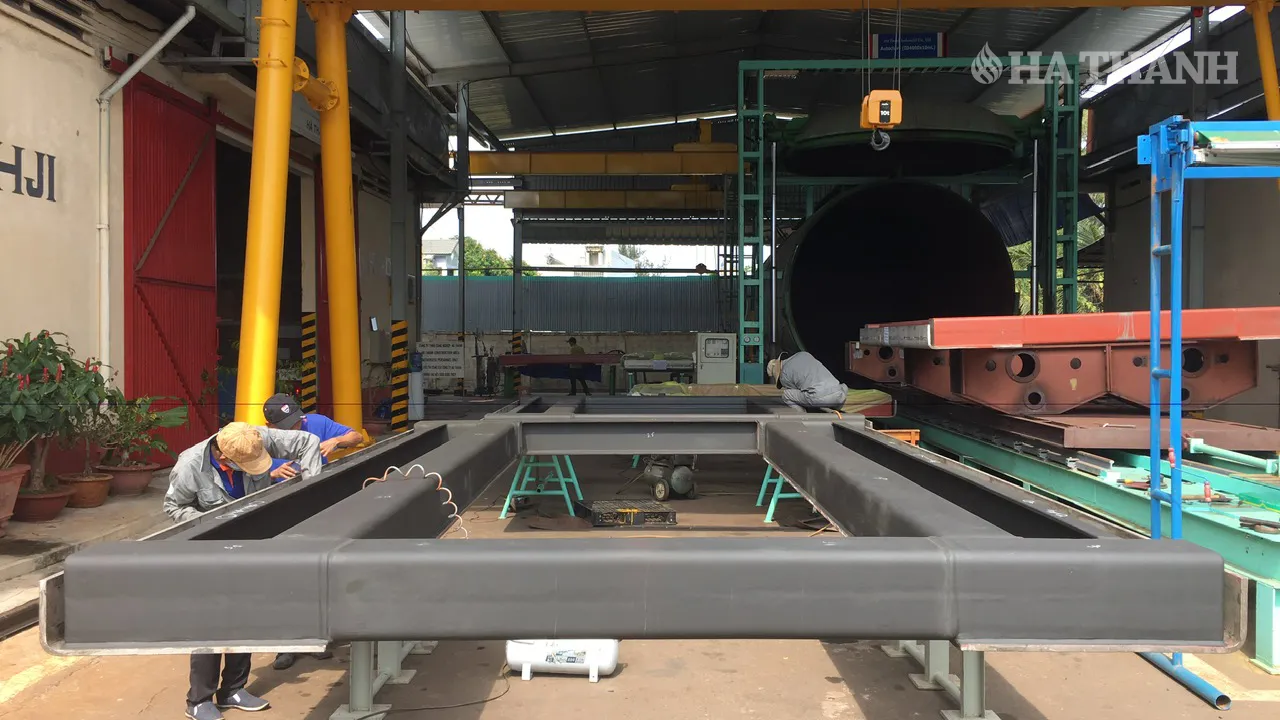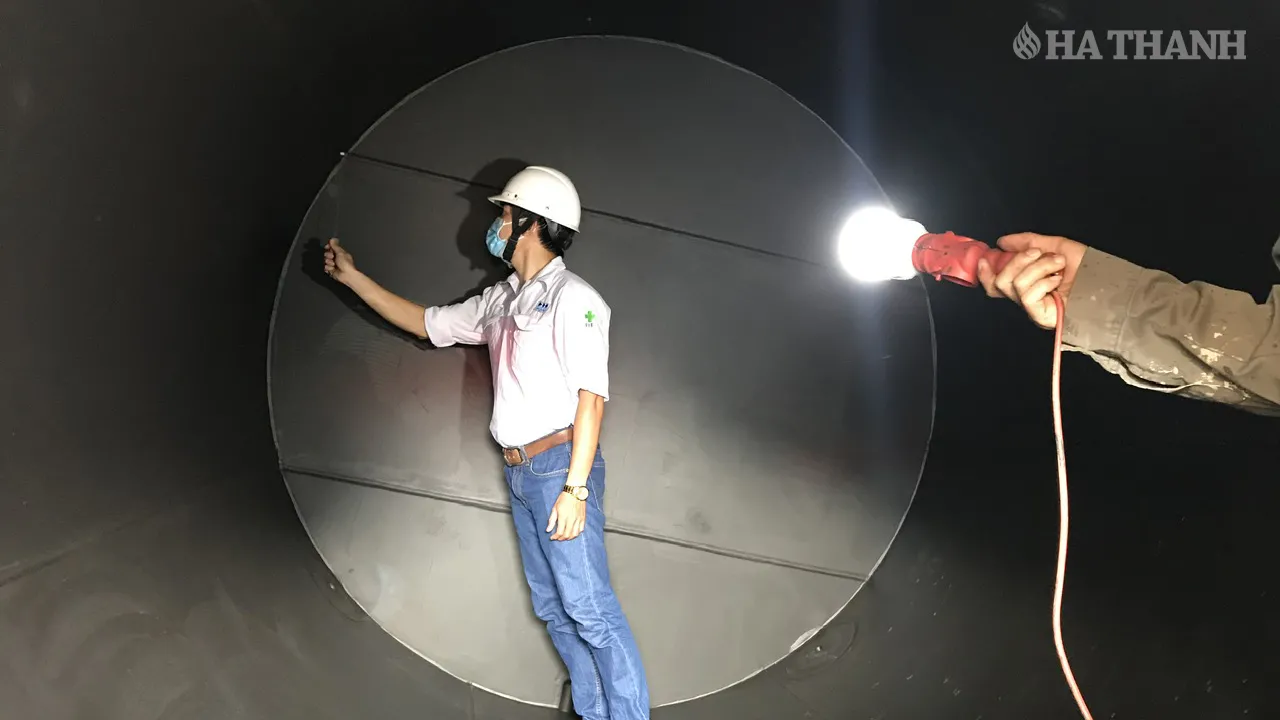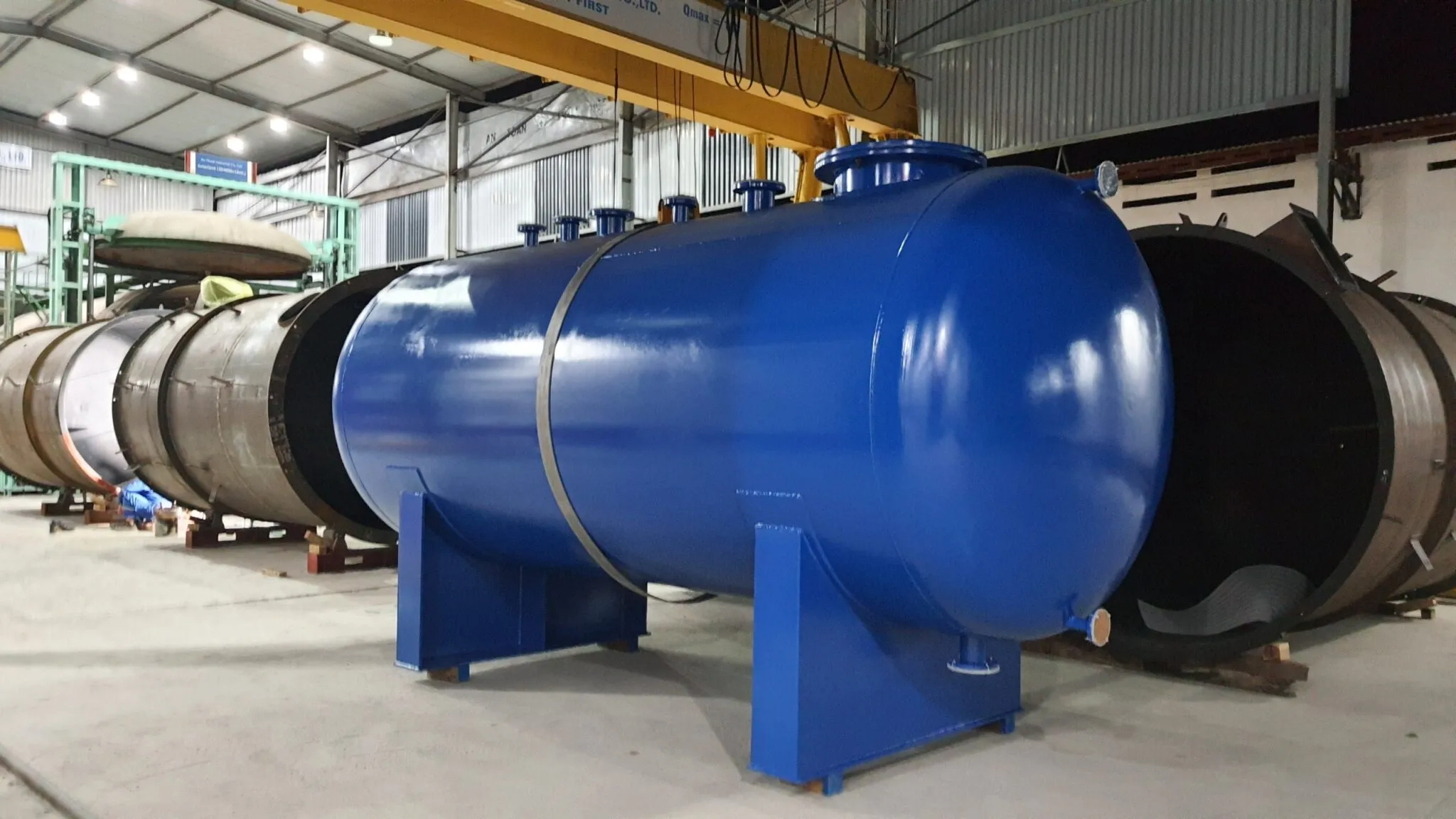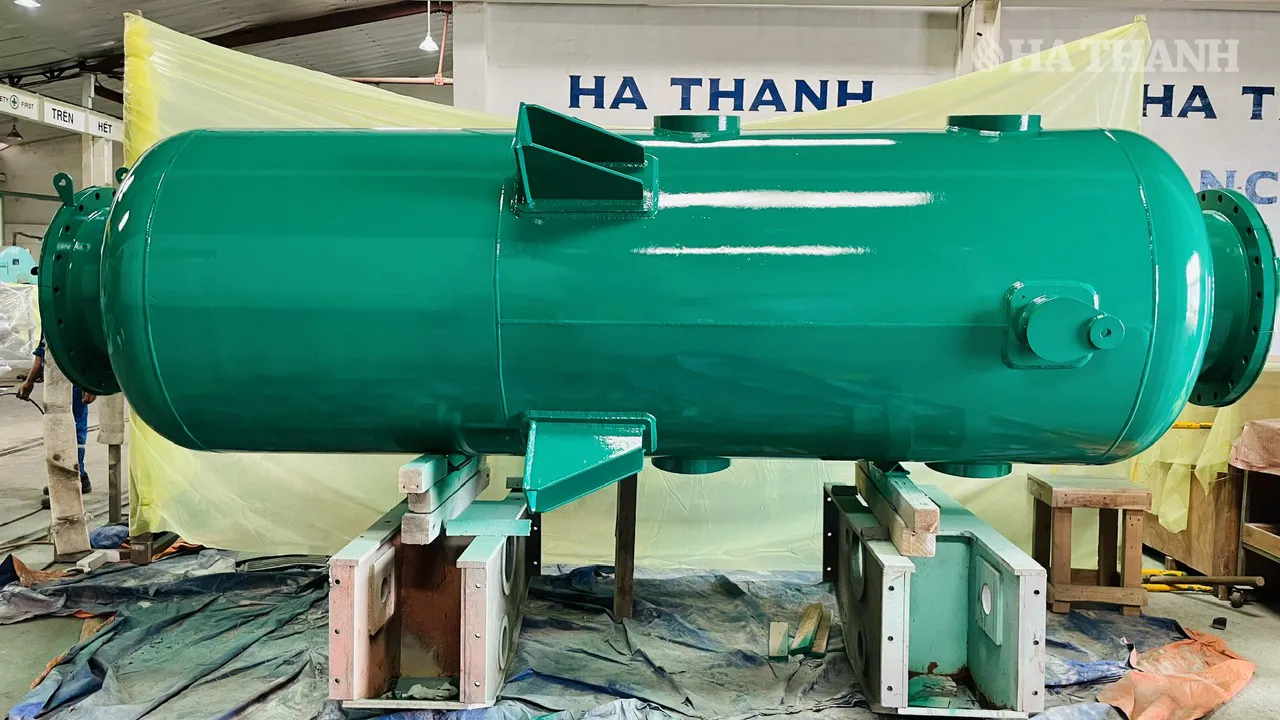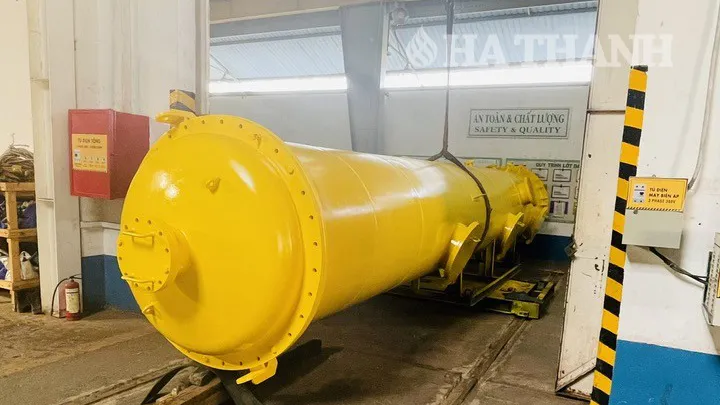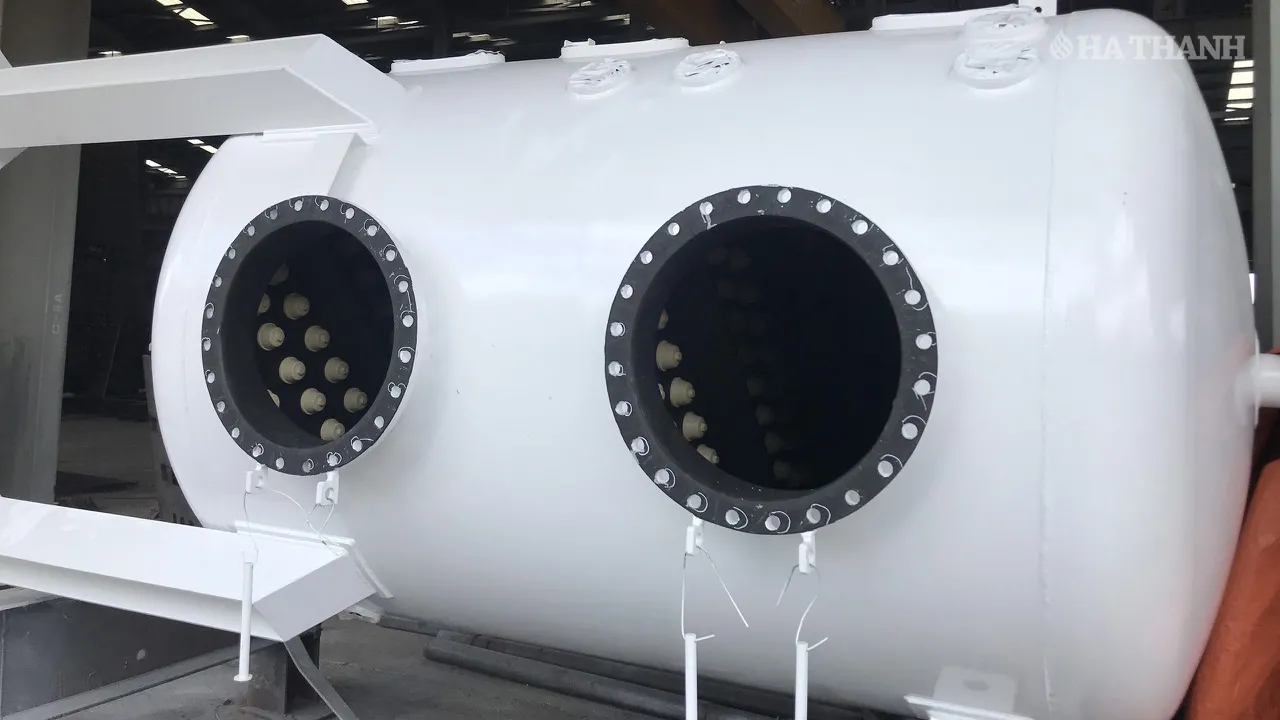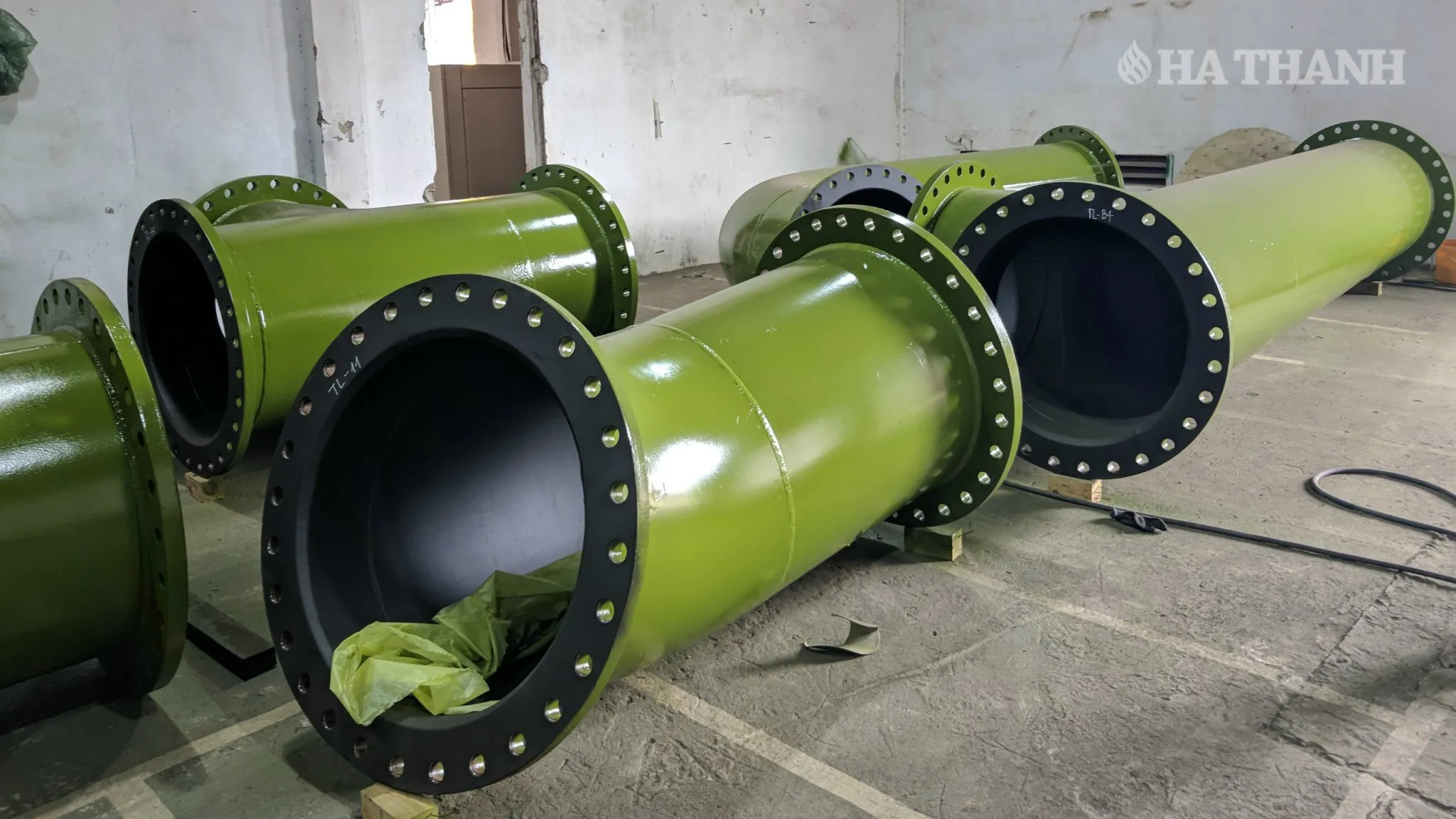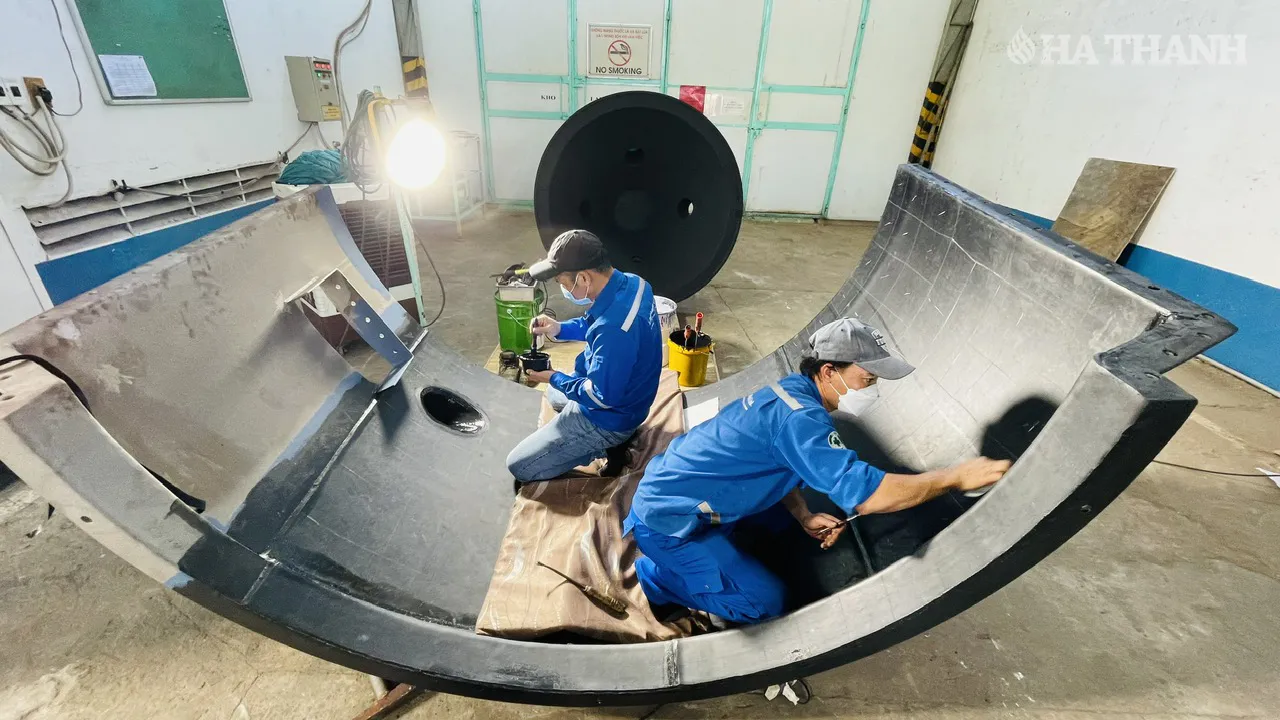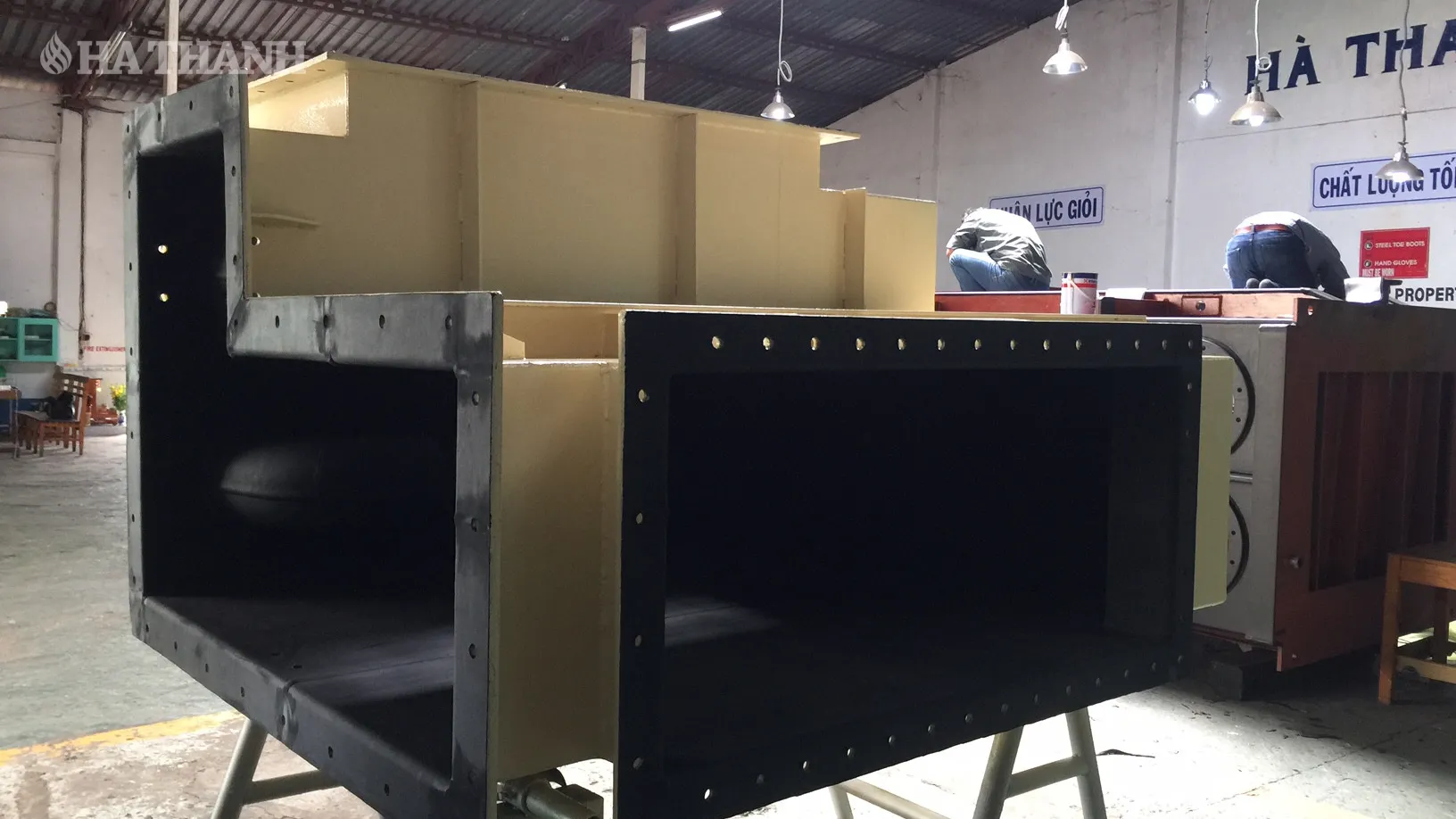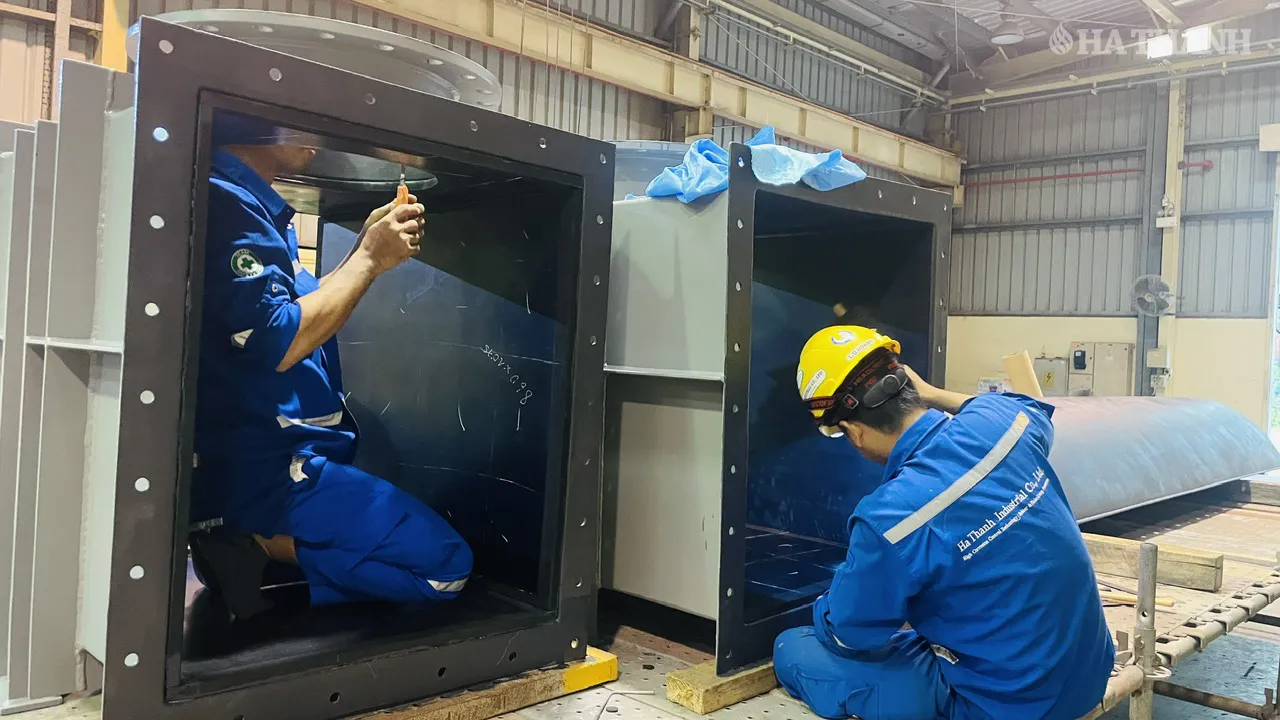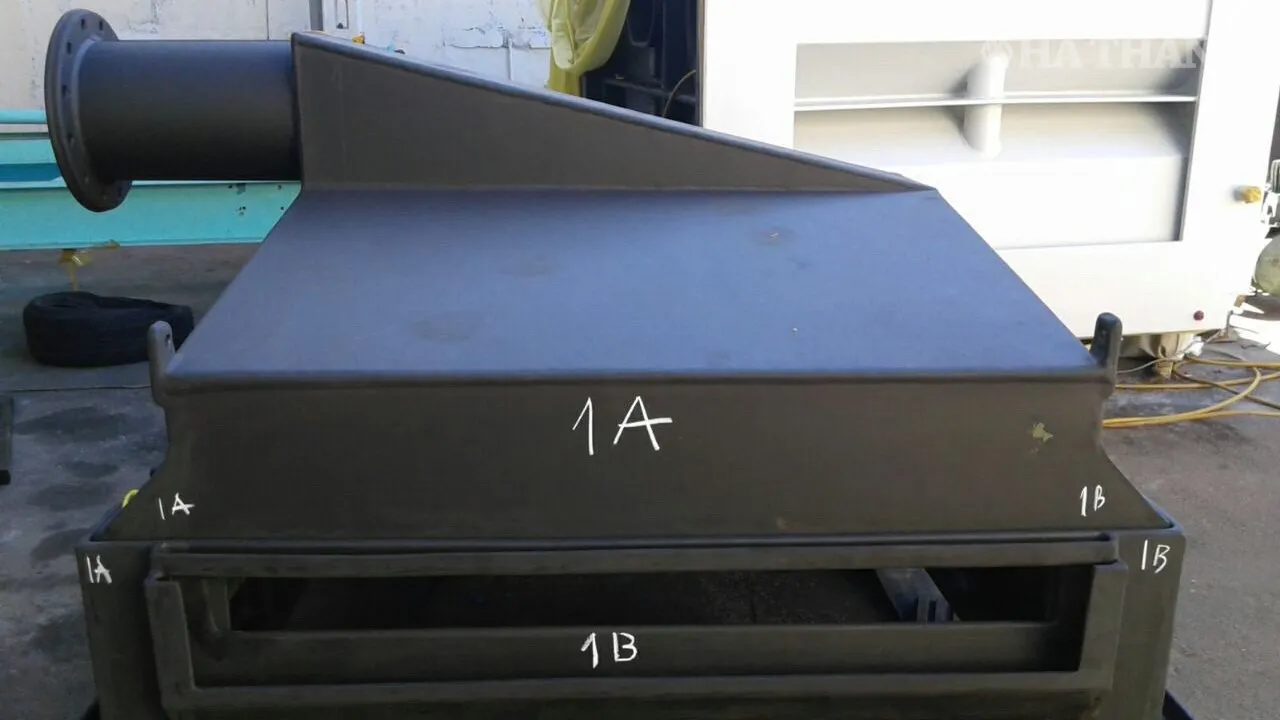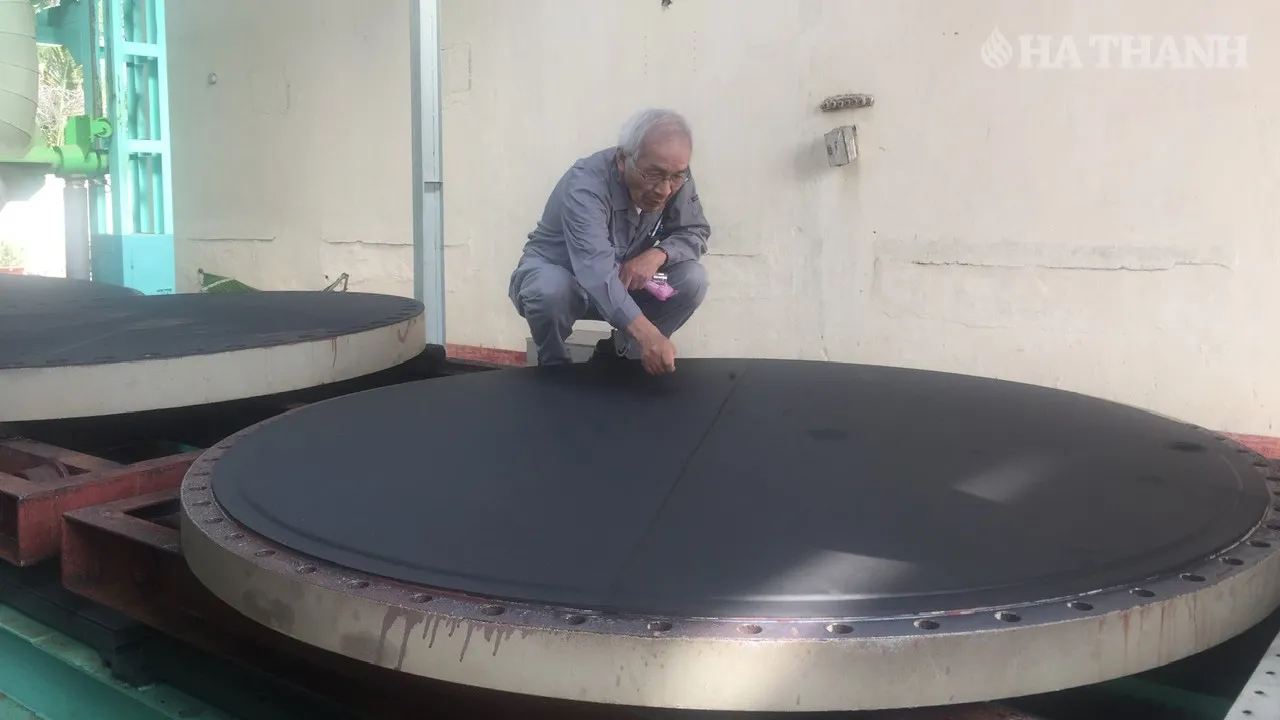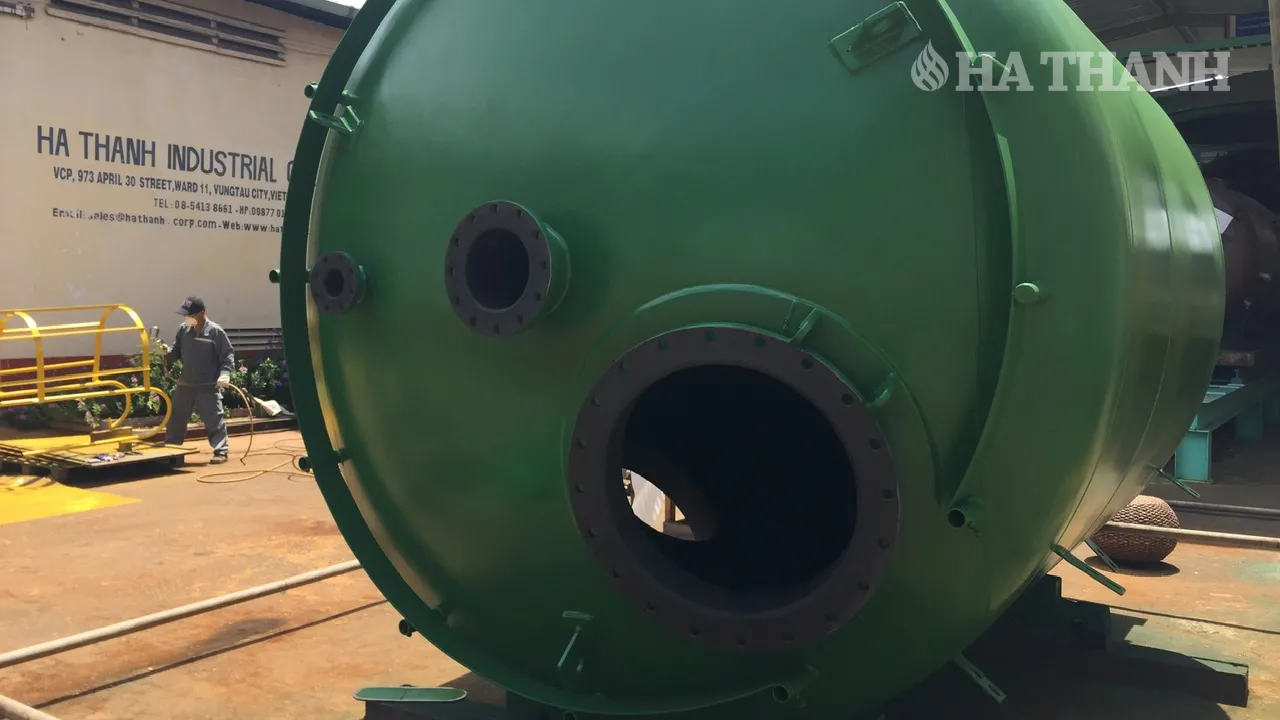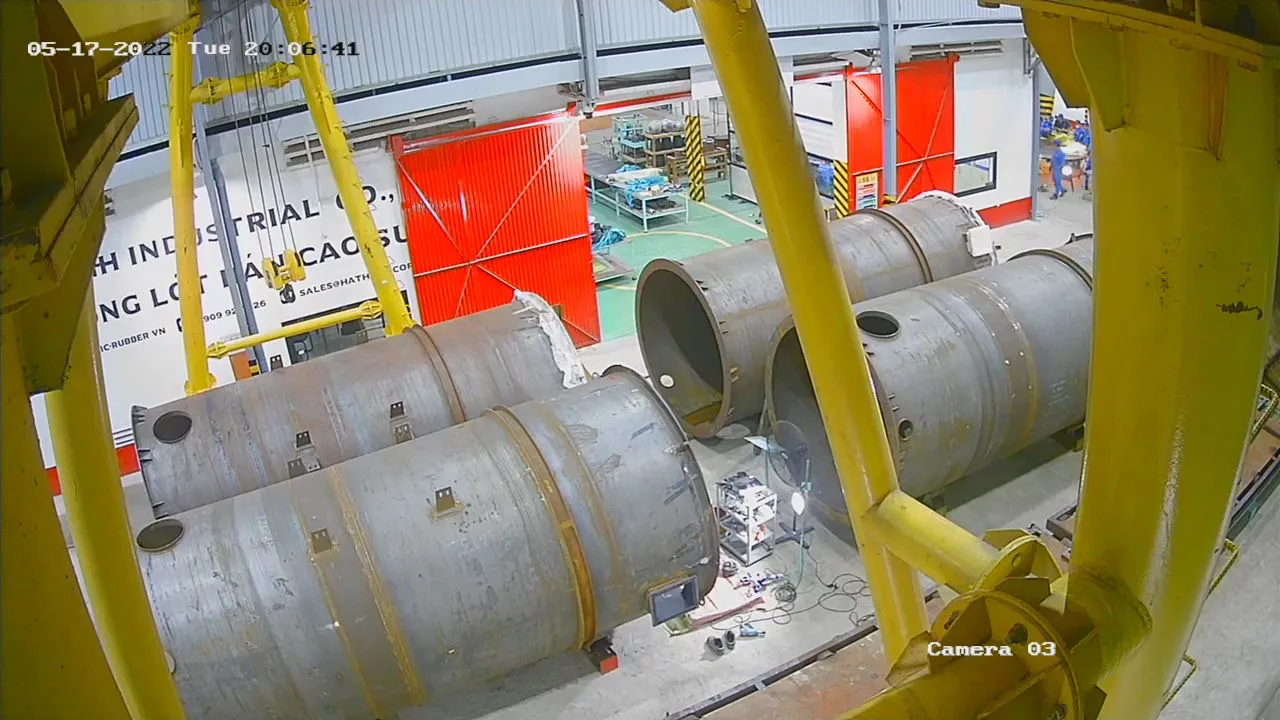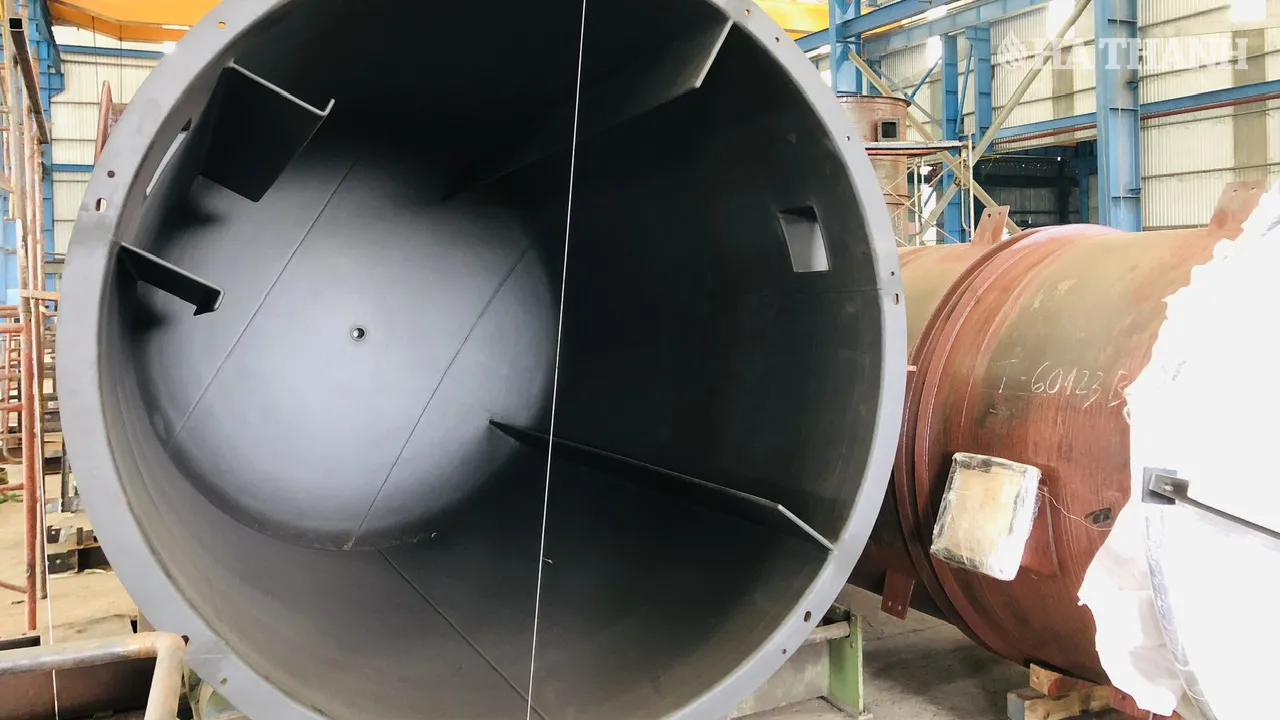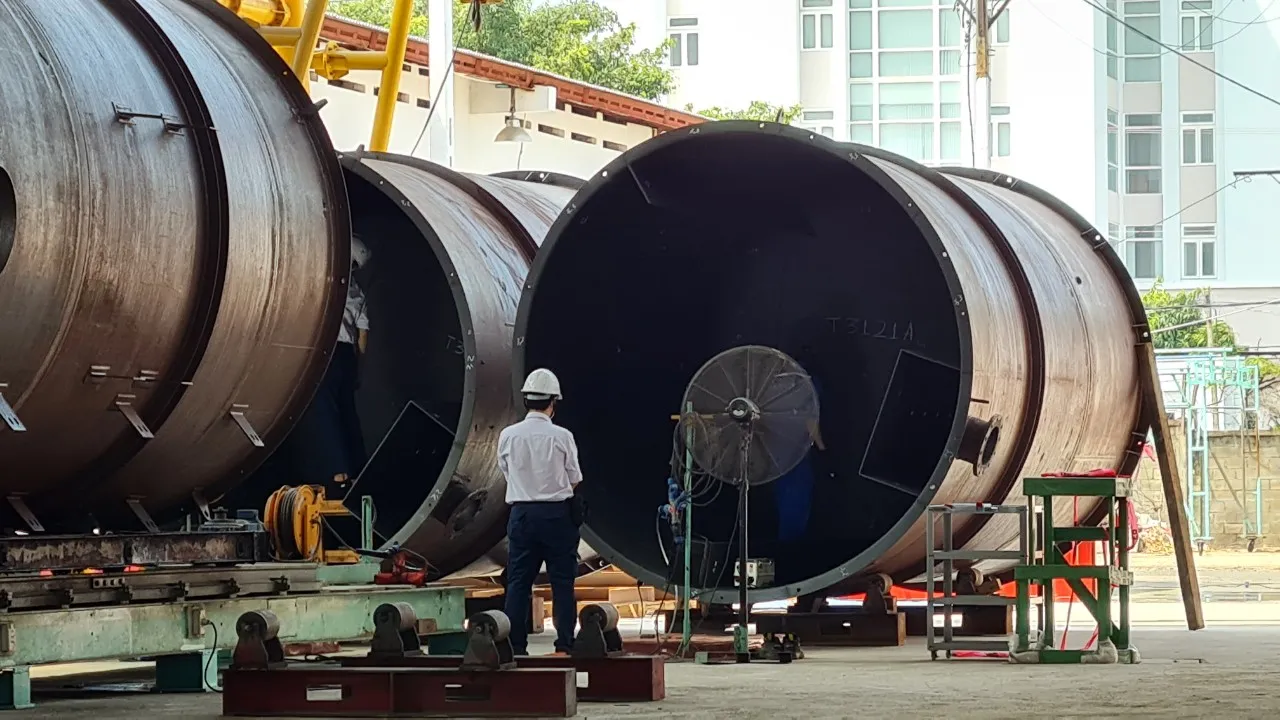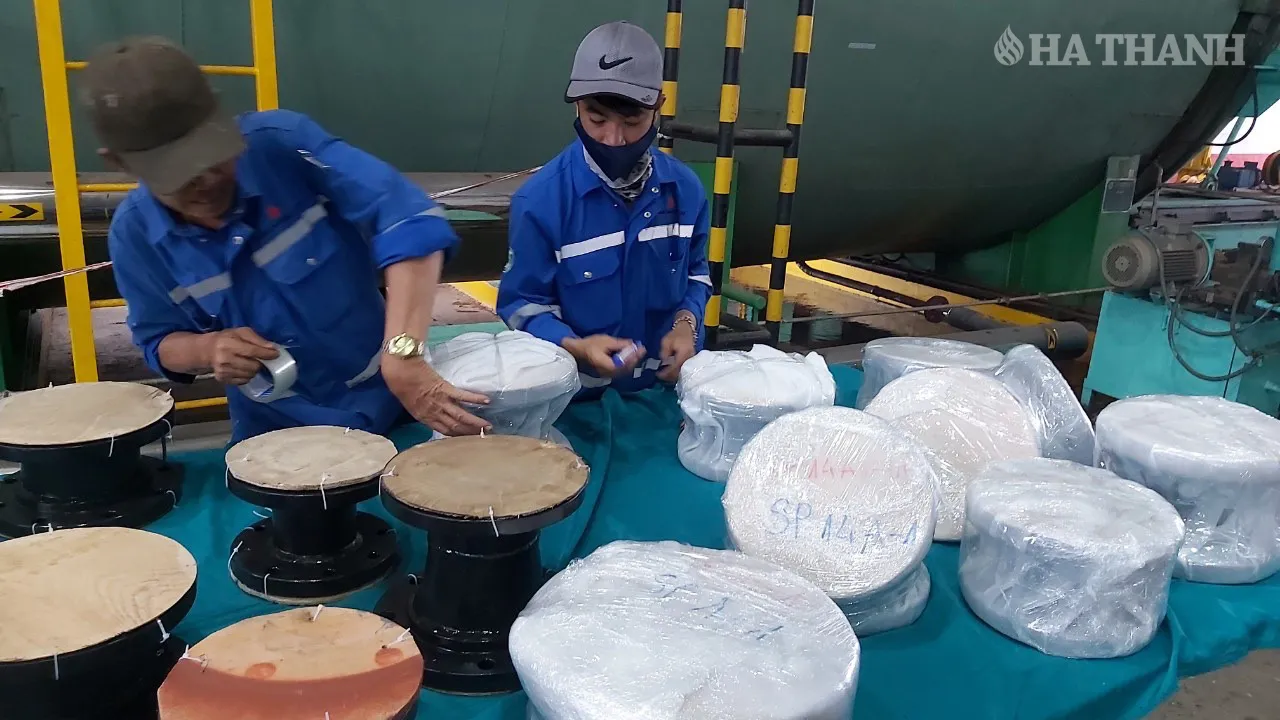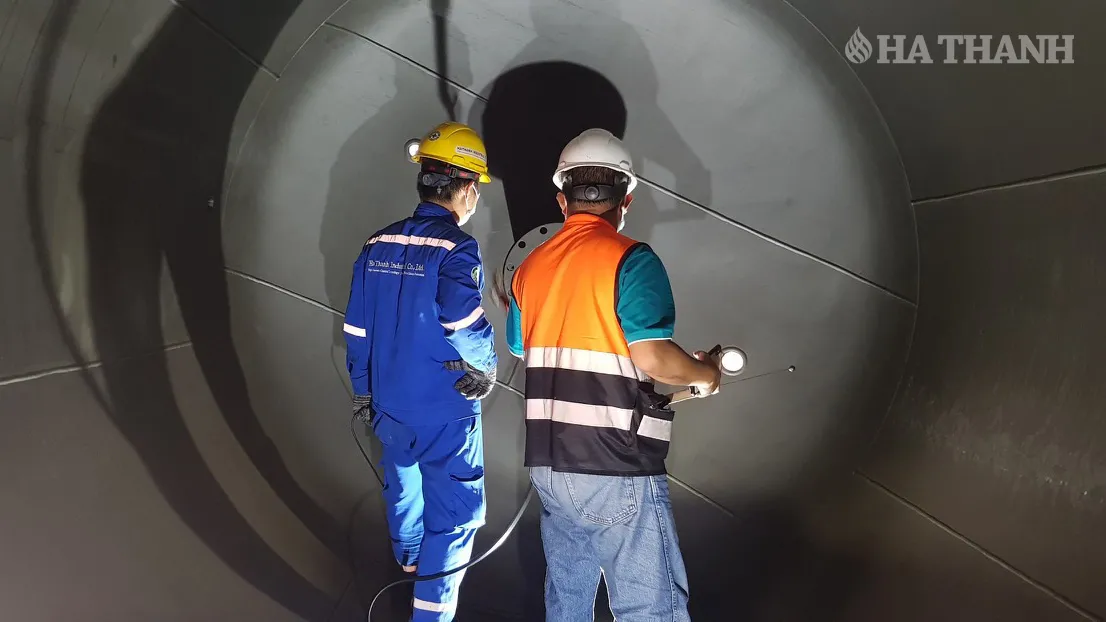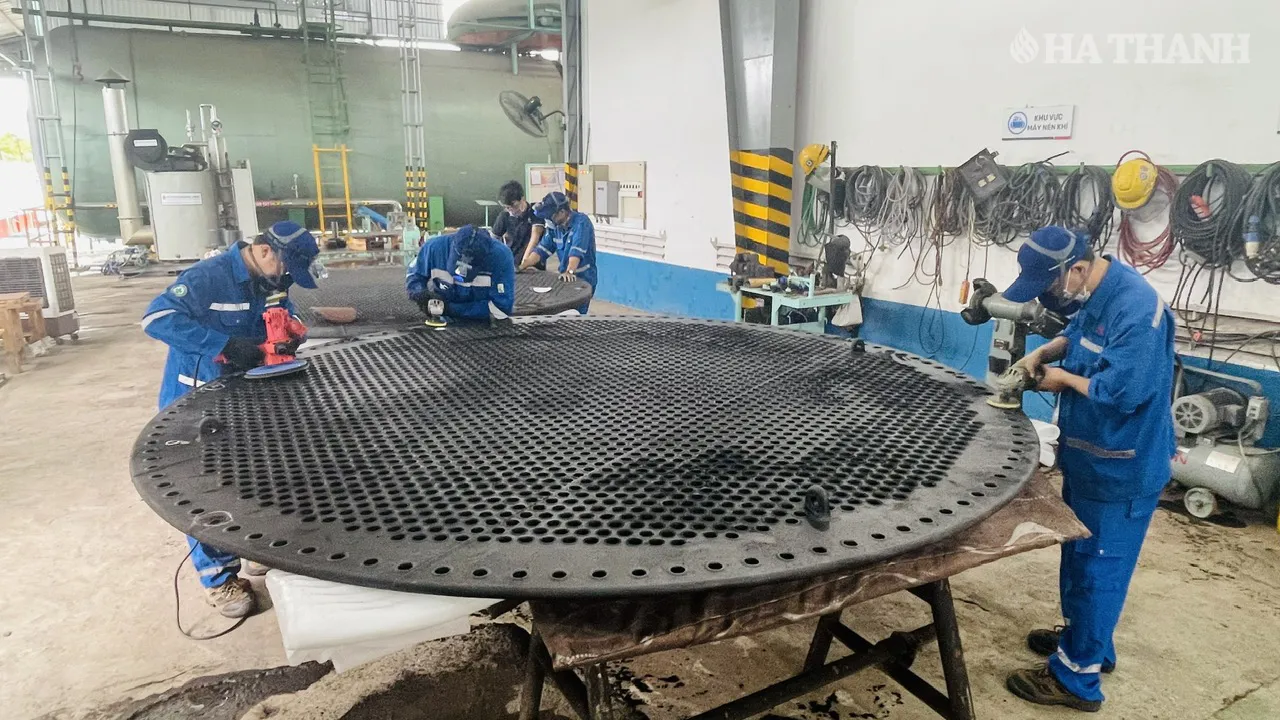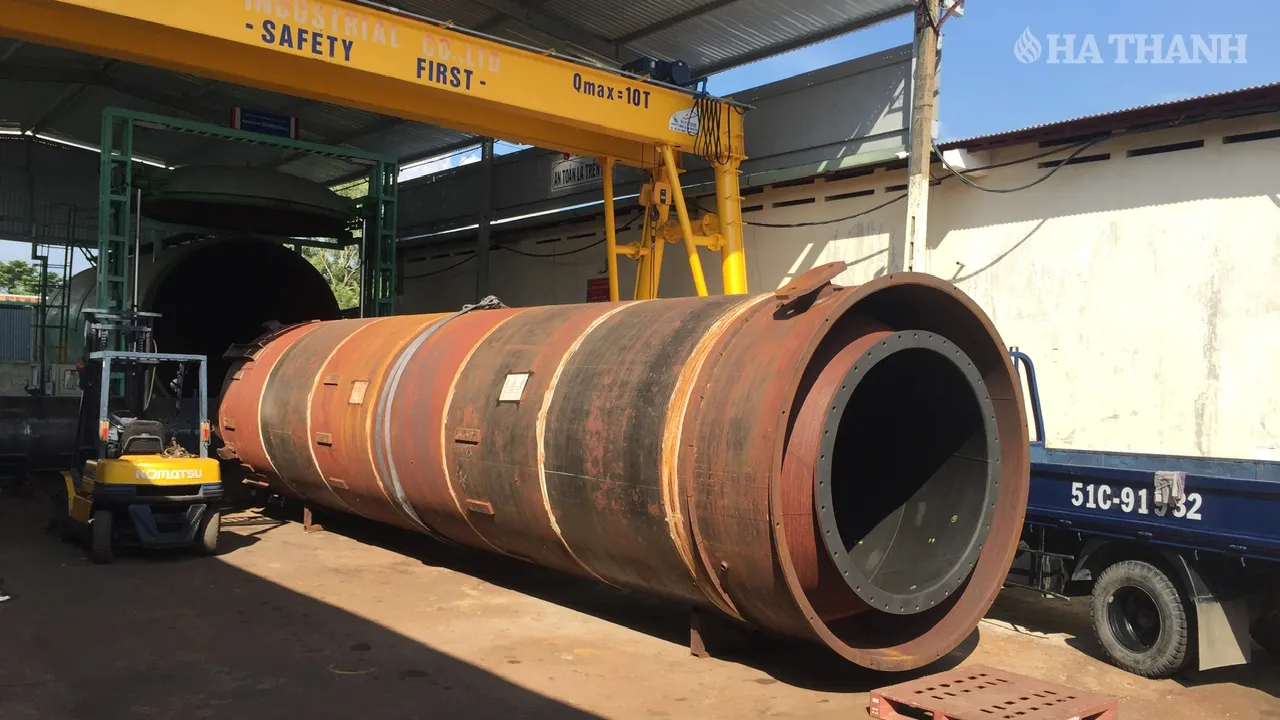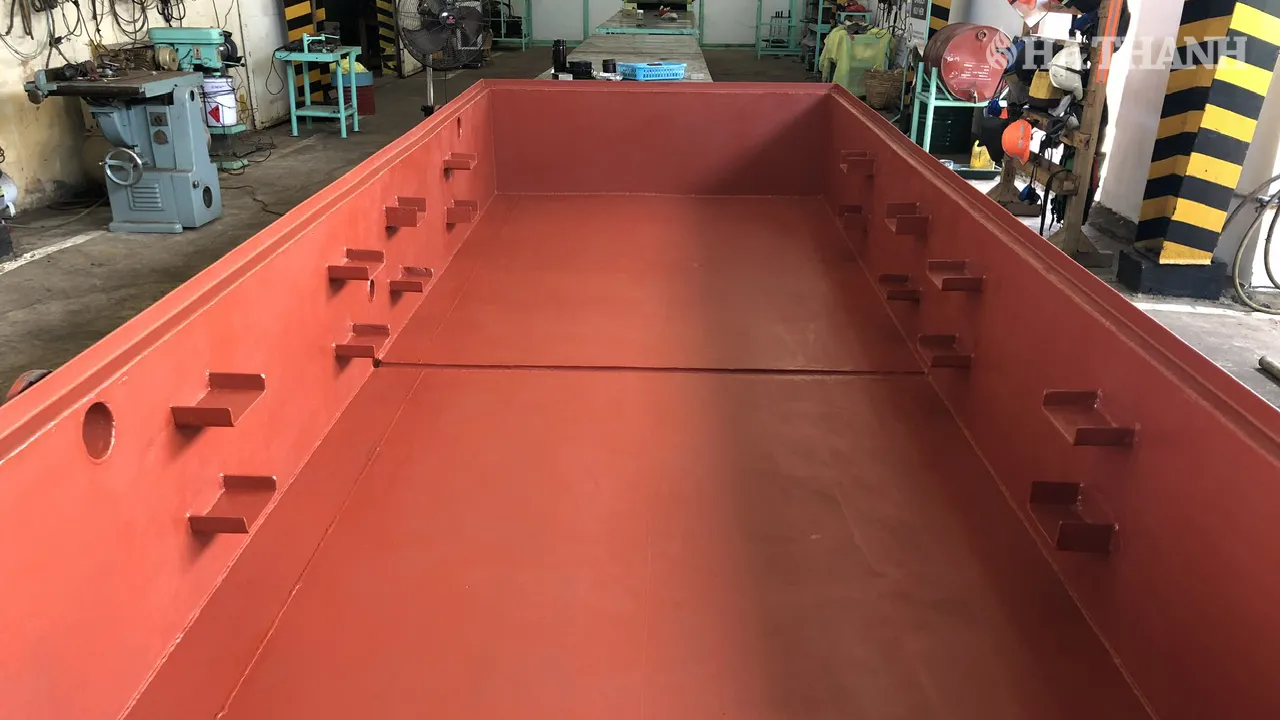Home – Services – Rubber Lining – In-shop rubber lining
Rubber Lining
In-shop rubber lining
Ha Thanh provides corrosion-resistant metal rubber lining services using the autoclave vulcanized rubber bonding method. This includes equipment such as pressurized chemical tanks, storage tanks, towers, pipes, ducts, mixing tanks, shafts and impellers, short and long round or square metal structures, FGD support bars, pipe clamps, channels, trays, discharge funnels, storage basins, mixers, polishers, grinders, and more.
Ha Thanh uses autoclave-vulcanized rubber lining in the workshop, including chemical-resistant natural hard rubber (NHR), abrasion-resistant soft rubber (NSR), Butyl rubber, Chloroprene rubber, and hard and soft rubber blends for acid resistance and impact resistance.
- Closed vulcanization with pressure by placing the equipment in an autoclave
- Direct closed vulcanization without pressure
- Steam spray vulcanization
Our strengths

Hard, Smooth, and Fine Rubber Linings
Consulting and selecting the appropriate rubber lining for the technical specifications and operating conditions of each piece of equipment to ensure longevity and long-term performance is Hà Thanh's top priority in implementing anti-corrosion rubber lining.
Skilled Lining Techniques
With high-quality sourced rubber materials and existing equipment, along with a skilled technical staff, Ha Thanh's rubber lining workshop ensures that most rubber coating and lining work for equipment ranging from small to large, with diameters and lengths smaller than ID 4,000mm x 10mL, is done using mandatory hot bonding and curing in steam autoclaves.
Exquisite and Uniform Rubber Joints
Hà Thanh has applied anti-corrosion rubber lining to thousands of square meters of diverse equipment, from small to large, such as pipelines, tanks, bars, accessories, chemical containers, ore guiding trays and troughs, mixing shafts, plating tank lines, electrolytic tanks, and internal and external pipe coatings.
Custom Rubber Linings
Hà Thanh's anti-corrosion rubber lining products are used in many domestic factories such as NSRP, LSP, AES, Formosa NT, and many others. In addition, some products have also been exported to international markets such as Belgium, the Netherlands, Australia, Japan, Singapore, and other countries in Asia, the Middle East, and some countries in Africa and America.
Workflow
At our workshop, the rubber lining process is carried out professionally and meticulously to ensure optimal quality for each product.
- STEP 01
Clean the surface of the equipment using abrasive blasting or grinding with electrical equipment
The surface of the equipment needs to be completely cleaned to remove dust, grease, and old rubber. This is typically done using abrasive blasting or electrical cleaning methods. After treatment, the surface will be inspected to ensure that no contaminants remain that could affect the adhesion of the new rubber layer.The surface of the equipment needs to be completely cleaned to remove dust, grease, and old rubber. This is typically done using abrasive blasting or electrical cleaning methods. After treatment, the surface will be inspected to ensure that no contaminants remain that could affect the adhesion of the new rubber layer.01 - STEP 02
Remove the old rubber layer - Apply the new rubber layer
This step involves removing the damaged or low-quality rubber layer. We utilize specialized tools and knowledge to carefully remove the old rubber. After that, a new rubber layer will be applied to the properly prepared surface.This step involves removing the damaged or low-quality rubber layer. We utilize specialized tools and knowledge to carefully remove the old rubber. After that, a new rubber layer will be applied to the properly prepared surface.02 - STEP 03
Apply lining inside and outside the equipment (tanks, pipes, and accessories)
Proceed to apply rubber lining to both the inside and outside of the equipment. This rubber layer helps resist chemical corrosion and wear during use. The lining must be applied accurately to ensure proper thickness and strong adhesion.Proceed to apply rubber lining to both the inside and outside of the equipment. This rubber layer helps resist chemical corrosion and wear during use. The lining must be applied accurately to ensure proper thickness and strong adhesion.03 - STEP 04
Vulcanize the equipment in an autoclave
After the rubber layer has been applied, the equipment will be placed in an autoclave to carry out the curing process. This process enhances the strength and chemical resistance of the rubber by applying the appropriate temperature and pressure. Curing is a crucial step to transform the rubber into its final form.After the rubber layer has been applied, the equipment will be placed in an autoclave to carry out the curing process. This process enhances the strength and chemical resistance of the rubber by applying the appropriate temperature and pressure. Curing is a crucial step to transform the rubber into its final form.04 - STEP 05
Quality inspection after vulcanization
Any defect shall be found and repaired through pinhole, hardness, thickness and appearance inspection.Any defect shall be found and repaired through pinhole, hardness, thickness and appearance inspection.05 - STEP 06
Apply the finishing coating to the product
After completing the curing process, a protective coating will be applied to the surface of the rubber layer. This coating not only enhances the aesthetic appearance but also provides additional resistance to external environmental factors, improving the durability of the product.After completing the curing process, a protective coating will be applied to the surface of the rubber layer. This coating not only enhances the aesthetic appearance but also provides additional resistance to external environmental factors, improving the durability of the product.06
Images
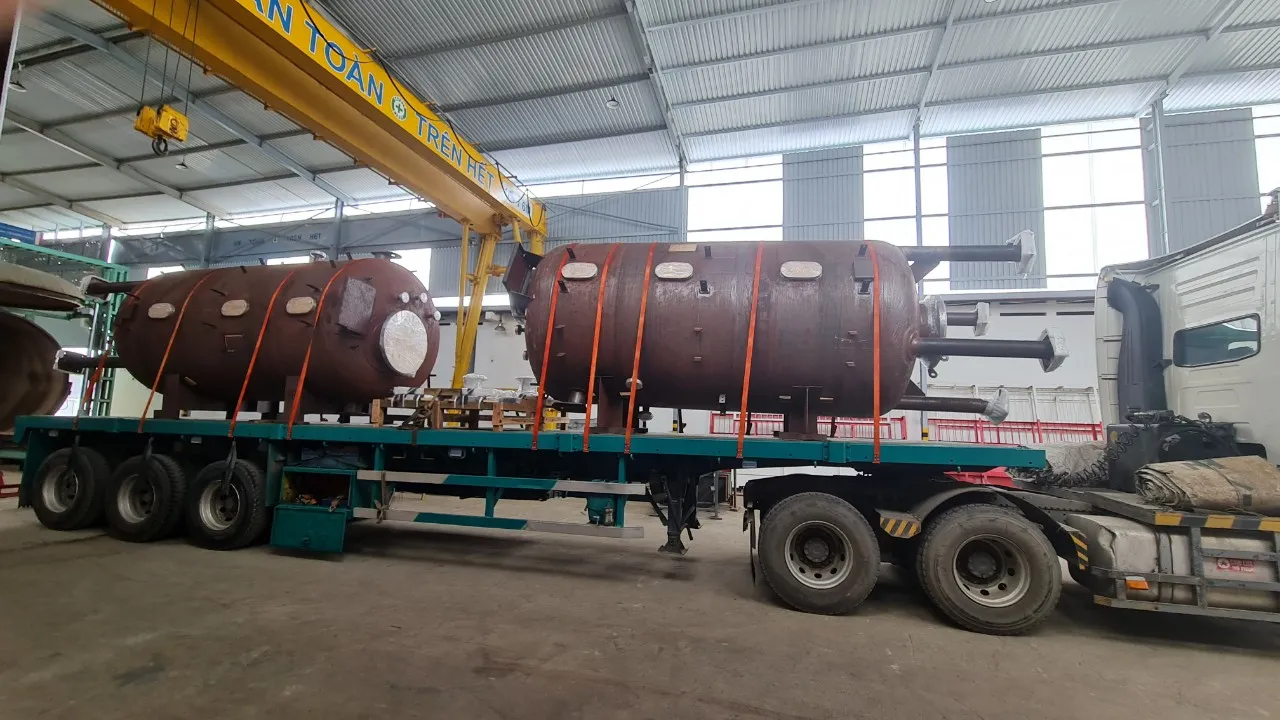
3mm E-7 hard rubber is a common type used for corrosion protection against most chemicals in water treatment applications for tanks such as Anion, Cation, and Mixed bed.

E-7 rubber 5mm double-sided adhesive for both inside and outside of plating tanks, operating in environments with HCl, H2SO4, and chromic acid.
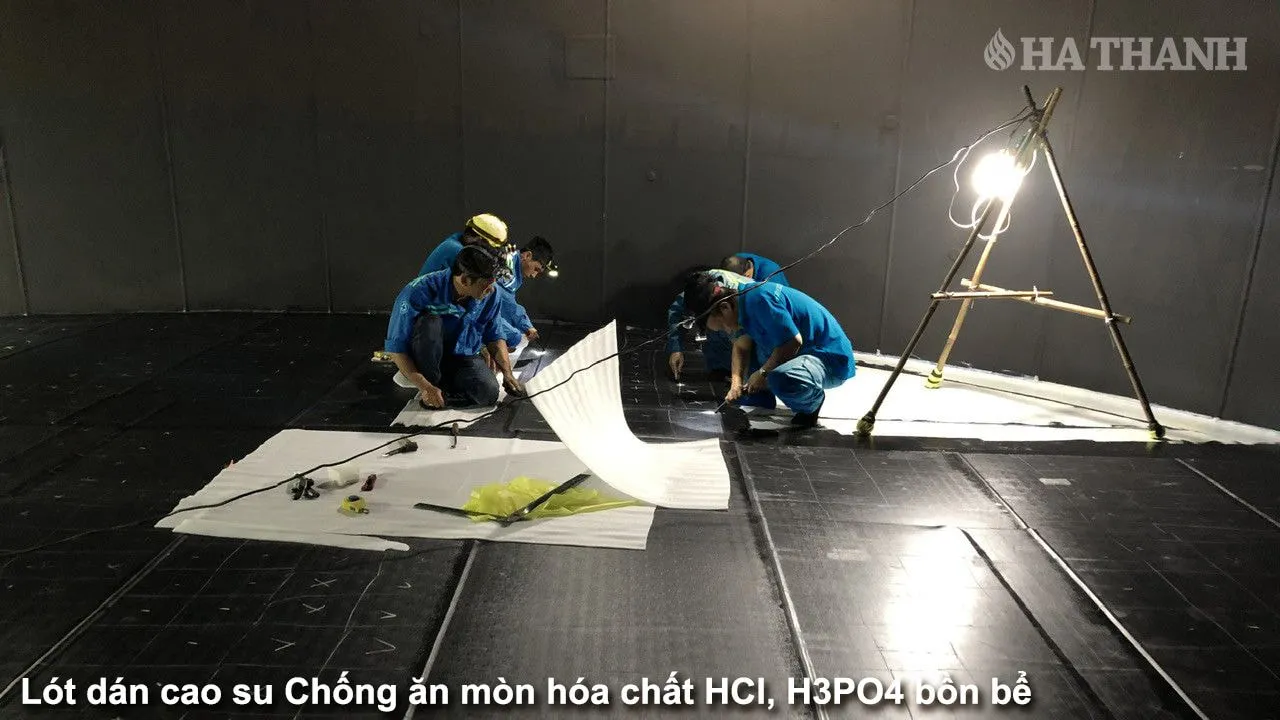
5mm E-15 and B-15 rubber lining for corrosion protection against HCl acid, H3PO4 acid, and other solutions.

Rubber pad E-7 3mm resistant to corrosion for marine water filtration tanks and frequent temperature changes.

Coat both the inner and outer surfaces of structures operating in acidic environments and high temperatures.
Notes
- Chemical Resistance
Chemical resistance is determined by test results and actual long-term performance. Selecting the correct material requires careful consideration of operating conditions and equipment specifications. - Factors Determining Product Quality
Rubber origin, rubber properties, chemical resistance of the rubber, adhesive, application methods, equipment, and personnel are all crucial factors determining product quality.
Therefore, please consult us beforehand to select the appropriate rubber material for your equipment.

